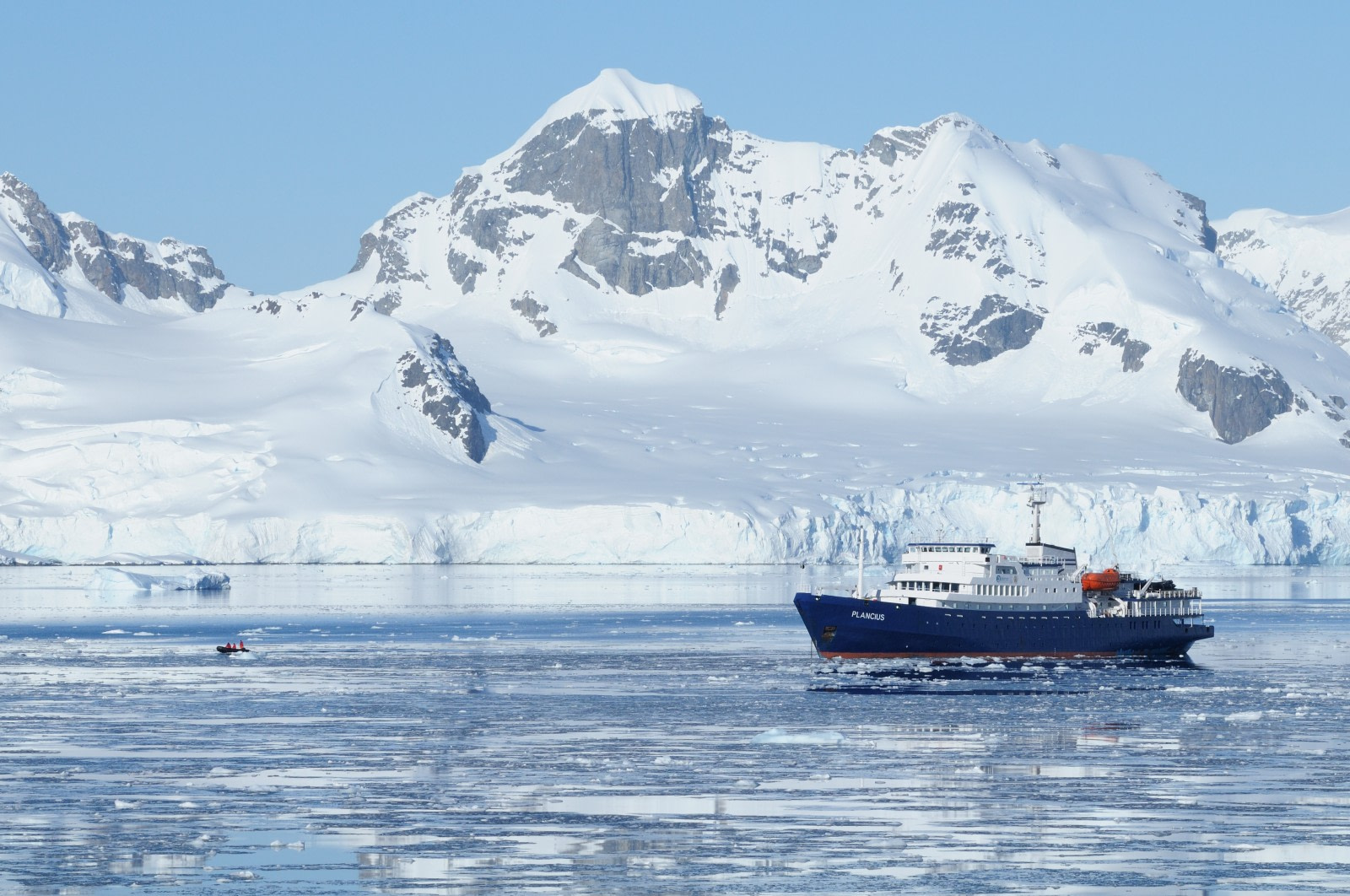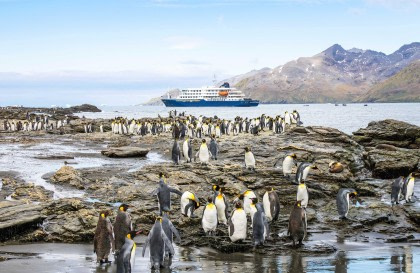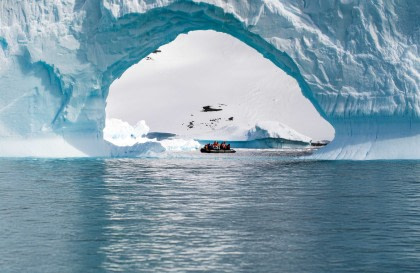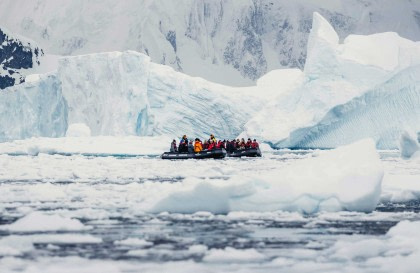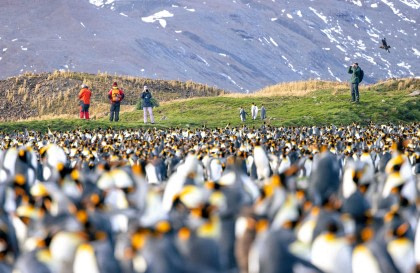Arctic or Antarctica? That is the question
Sunrises or sunsets? Coffee or tea? Polar bears or penguins?
The world contains virtually limitless things to compare, contrast, juxtapose, and differentiate. But few things describe the planet’s polarities so perfectly as its literal geographic poles – that is, the Arctic in the north and Antarctica in the south.
There are admittedly many similarities between these two regions, and at first glance they’re easily confused for one another. But Earth’s icy bookends are not only different in terms of wildlife and terrain, they’re also distinct in terms of the travel-tourism opportunities they offer. Knowing which region to visit, then, can be an overwhelming decision. In fact, it’s sometimes enough to turn travelers off to the idea of a polar cruise altogether.
But it doesn’t have to be.
If you’re wondering whether your first (or next) mind-blowing adventure should be to the Arctic or Antarctica, please read on. What you learn might mean the difference between a trip that ends in a disappointed fizzle or an incurable case of polar fever.
Note: If you just want the bullet points, feel free to skip to our detailed infographic at the end.
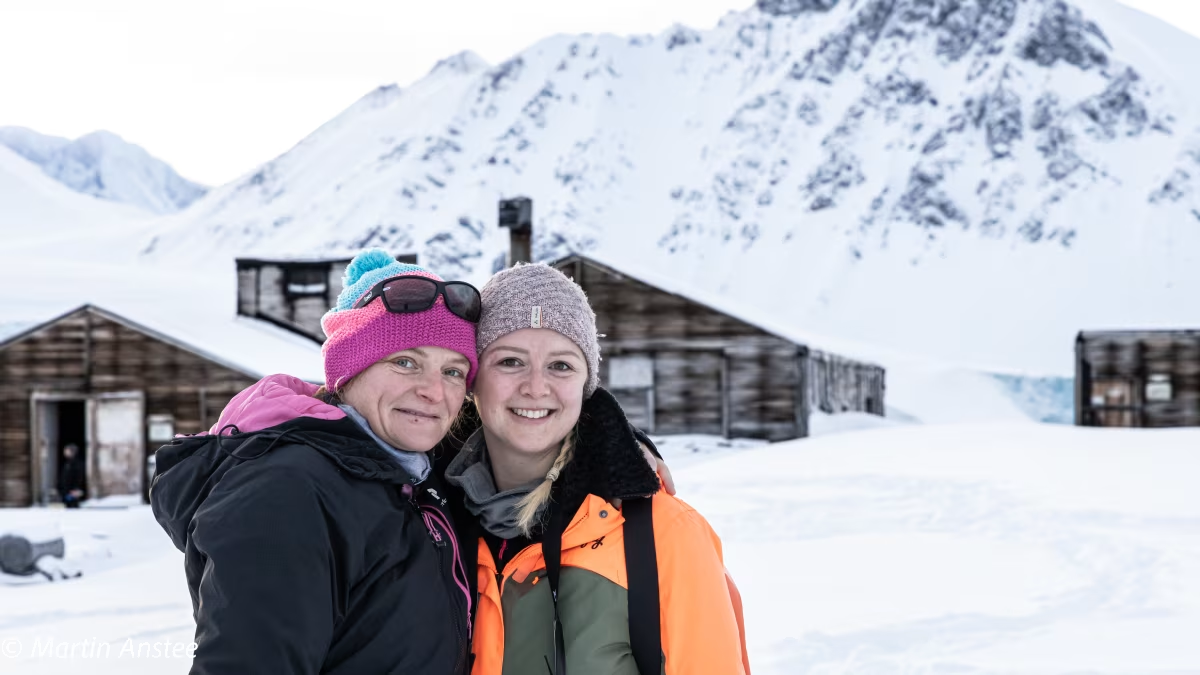
Arctic vs. Antarctic wildlife: polar bears or penguins
In our experience, most travelers visit the polar regions for the animals.
More than the landscapes, activities, and generously stocked bars aboard our vessels, it’s usually wildlife that determines whether you’re Team Arctic or Team Antarctica – not that you can’t play for both. Still, the Arctic vs. Antarctic wildlife debate usually revolves around polar bears and penguins.
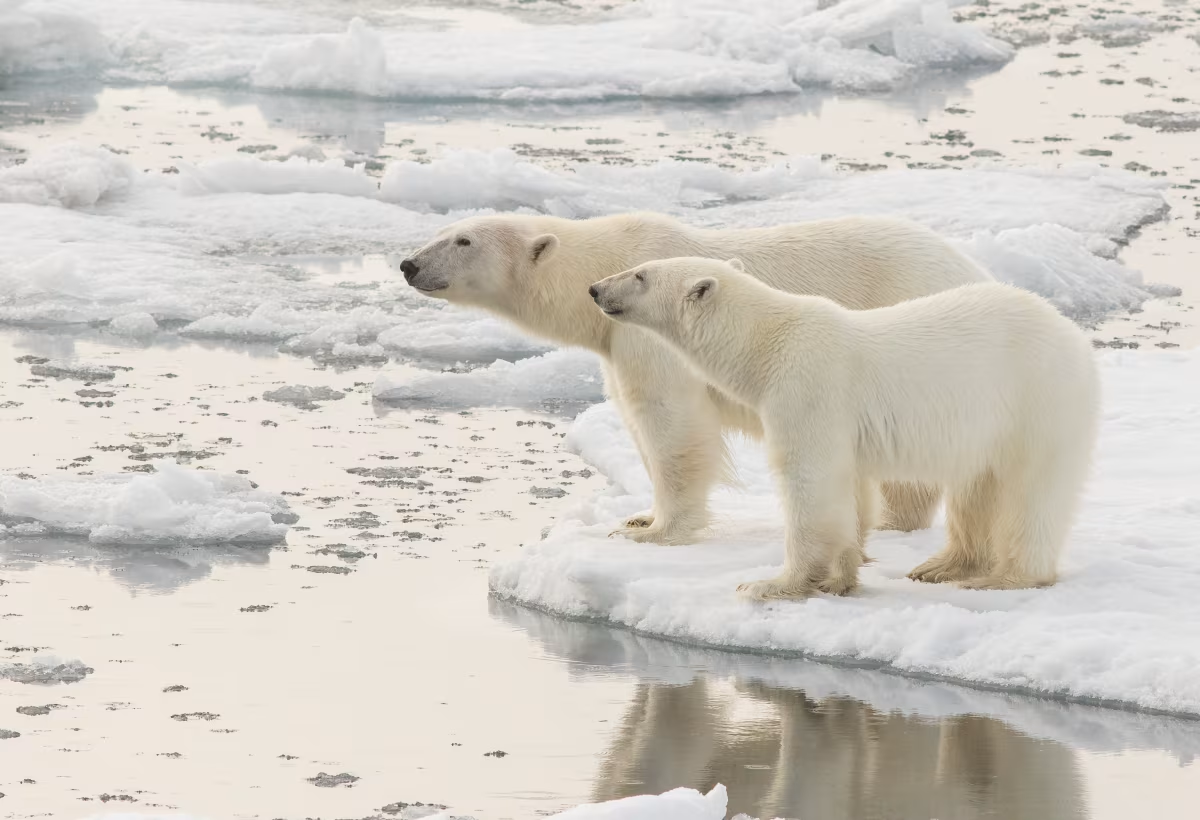
ARCTIC ANIMALS:
The Arctic is the only place you can see polar bears, which do not live in Antarctica. (Conversely, penguins are found in Antarctica, among other places, but not in the Arctic.)
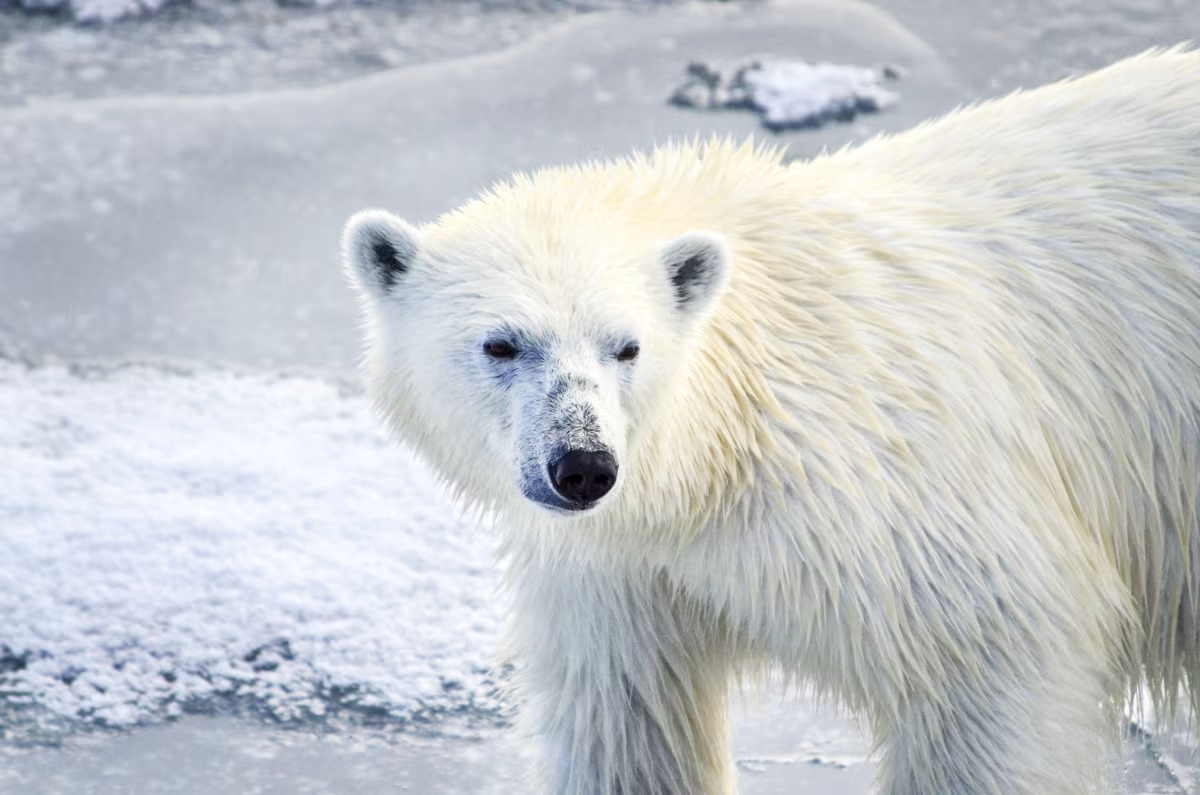
That said, going to the Arctic does not guarantee you will see a polar bear. Though these white giants are not fantastically rare, they are also not terribly abundant. If you happen to spot one or more on your Arctic cruise, then, count yourself lucky.
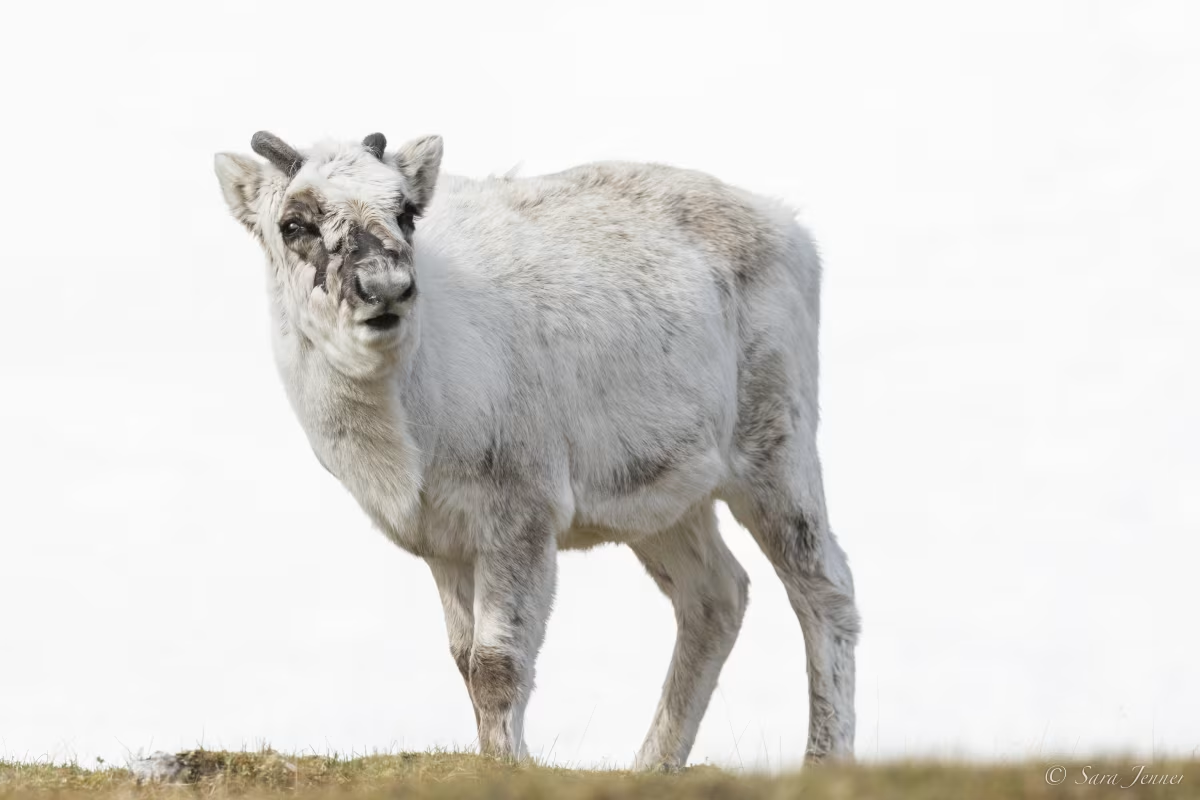
The Arctic also has many marine species like humpback whales, belugas, fin whales, blue whales, and to a much rarer degree, narwhals and orcas, or killer whales.
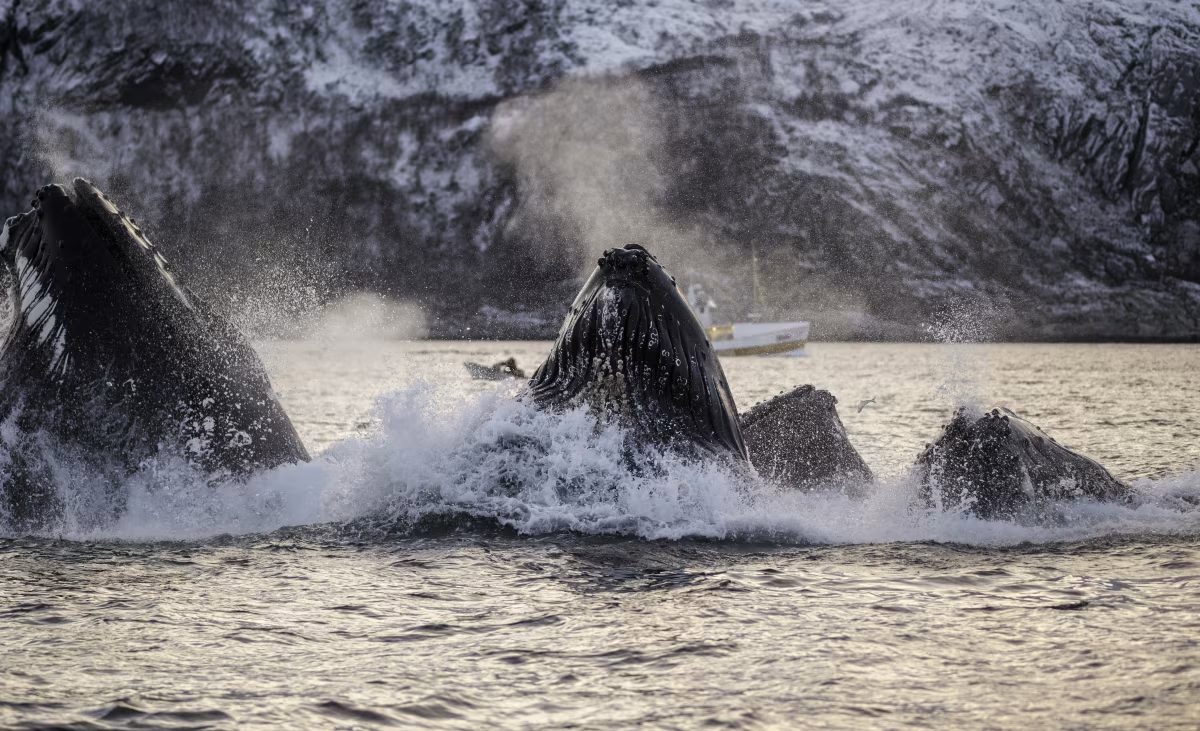
As for seals, bearded seals, ringed seals, and hooded seals are only some of seals you could see there. Please see our Six Arctic Seals blog and Arctic seals video for more.
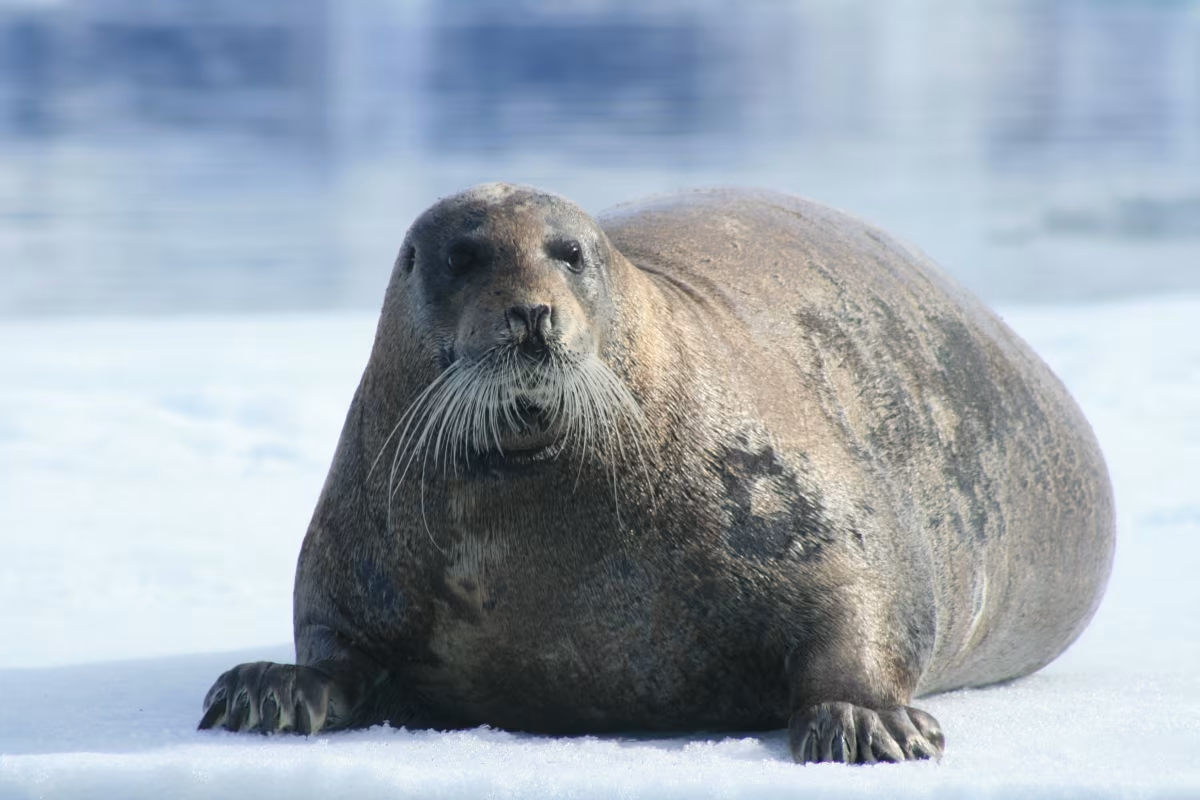
Land animals in the Arctic include reindeer, Arctic foxes, Arctic hares, musk oxen, and walruses, which are both terrestrial and marine mammals.
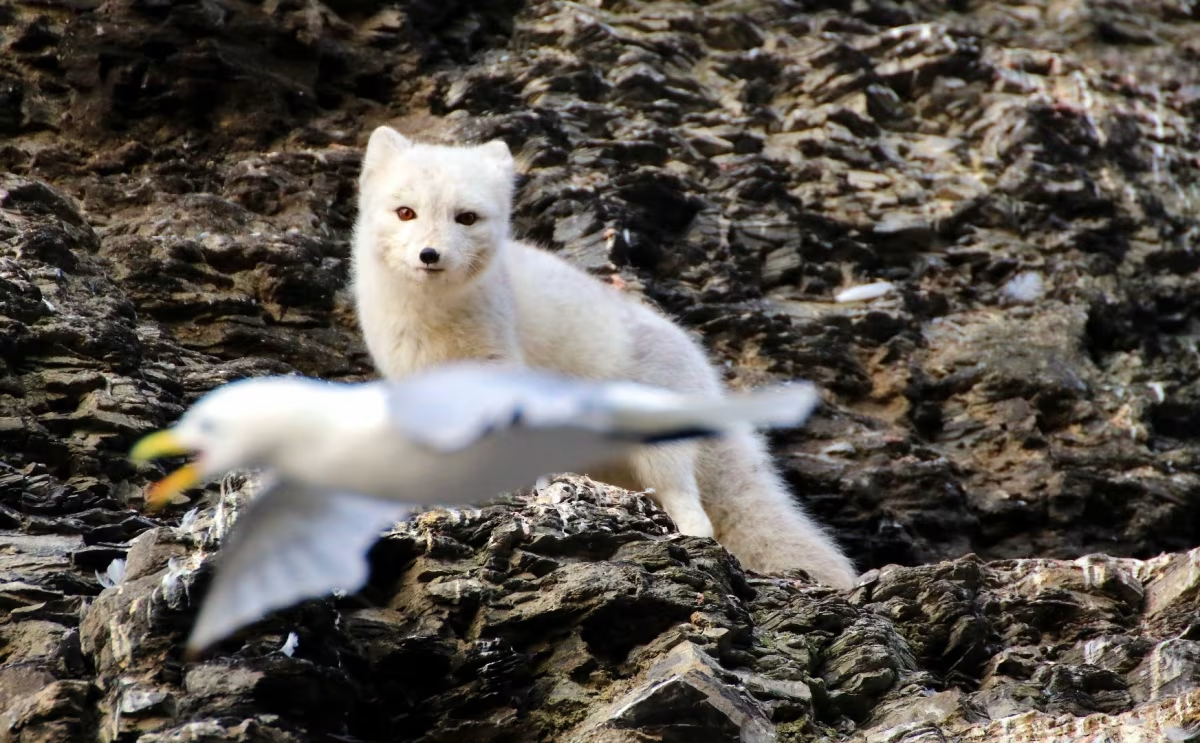
Arctic birds, meanwhile, include such species as puffins, kittiwakes, and little auks, among many others. For a more complete list of these winged residents, please see our extensive Arctic birds article.
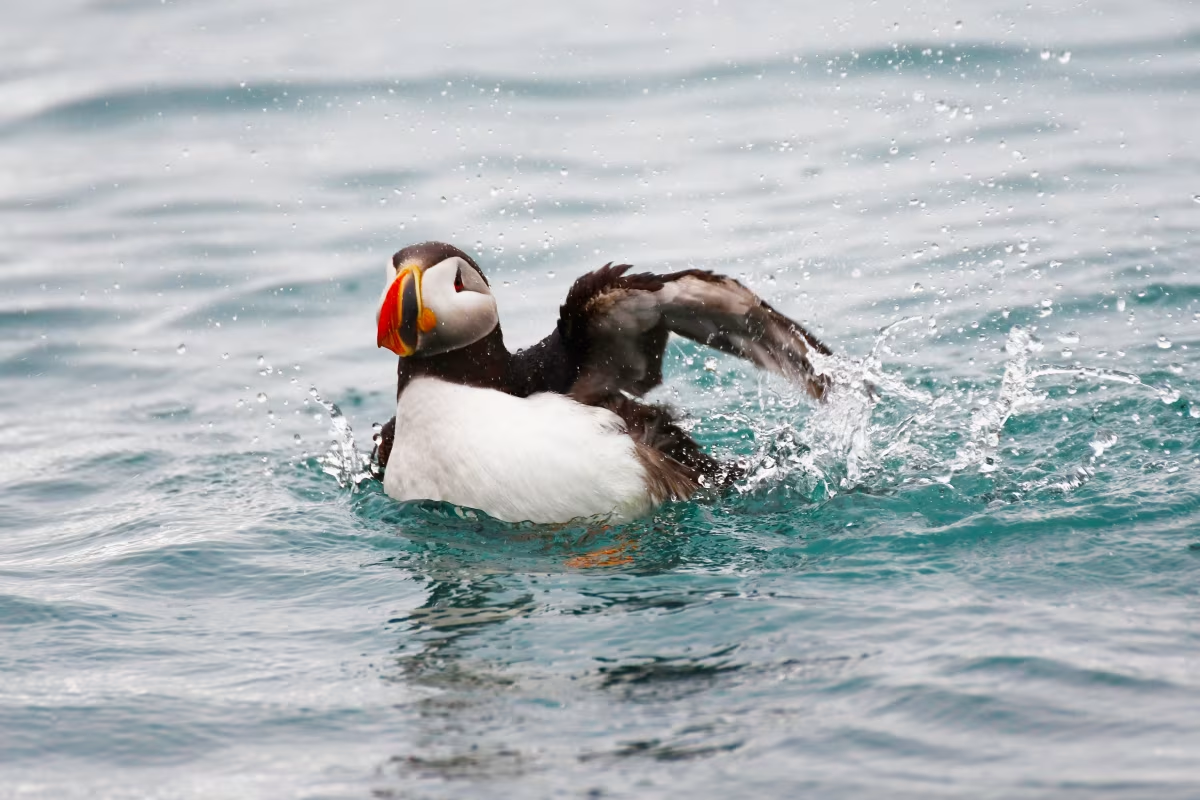
ANTARCTIC ANIMALS:
While we cannot guarantee you’ll spot penguins either, you are likelier to see these flightless seabirds in Antarctica than polar bears in the Arctic. This is especially true in relatively penguin-rich areas like the Antarctic Peninsula, the Weddell Sea, and sub-Antarctic islands like South Georgia.

Indeed, South Georgia has some of the largest penguin colonies in the world. But other sub-Antarctic islands like the Falklands and South Shetlands have penguins, too.
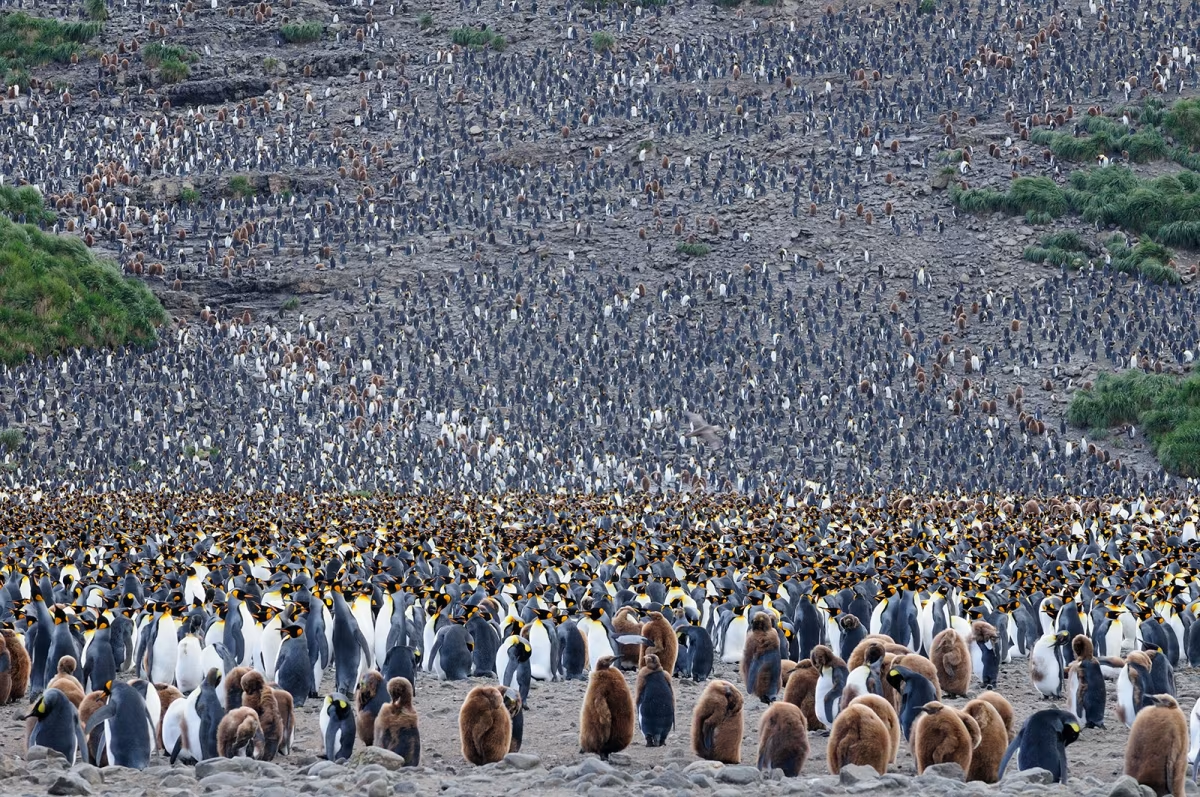
Antarctica’s wildlife is somewhat more marine-based than the Arctic. You may see seals, such as occasional leopard seals along the Antarctic Peninsula or southern elephant seals in sub-Antarctic sites like Gold Harbour, Salisbury Plain, and St. Andrews Bay.
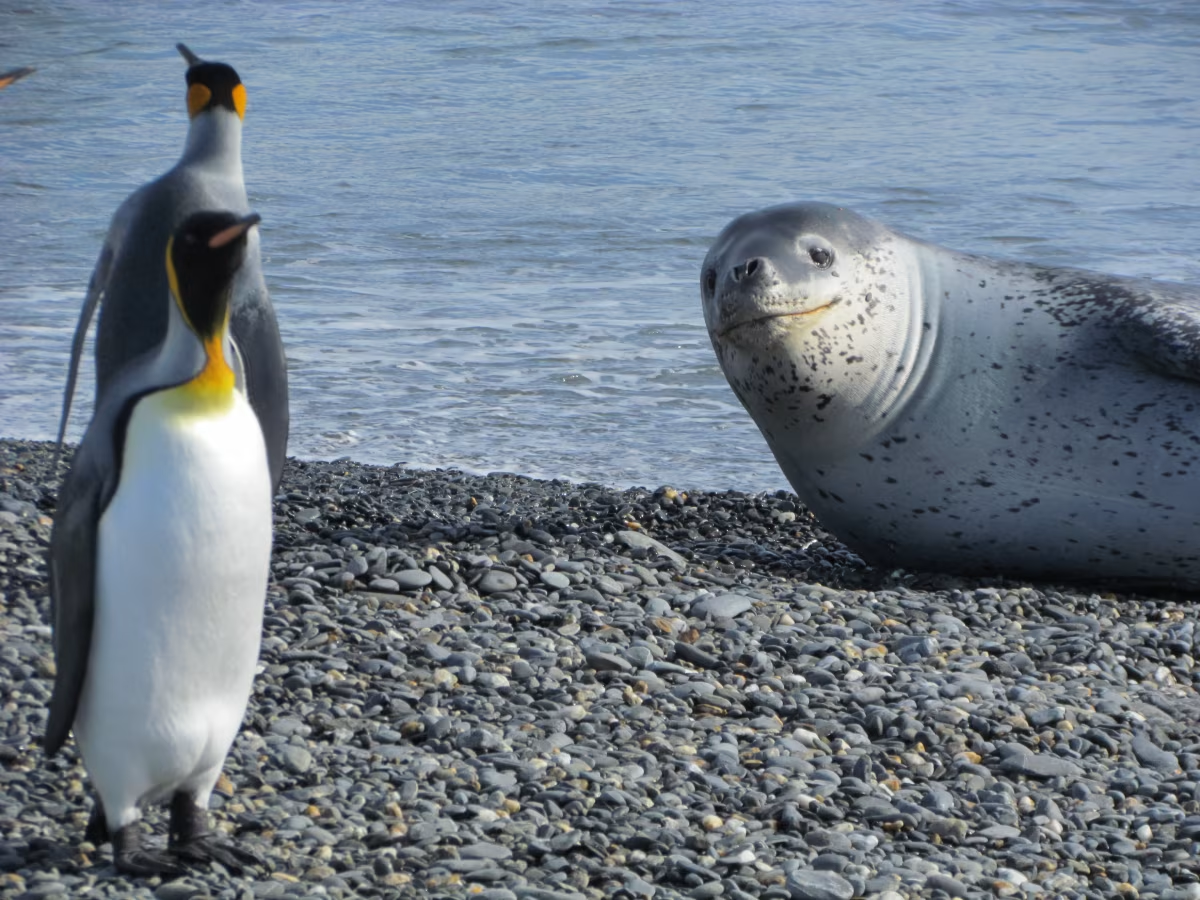
Also present are Antarctic fur seals and crabeater seals, among many others.
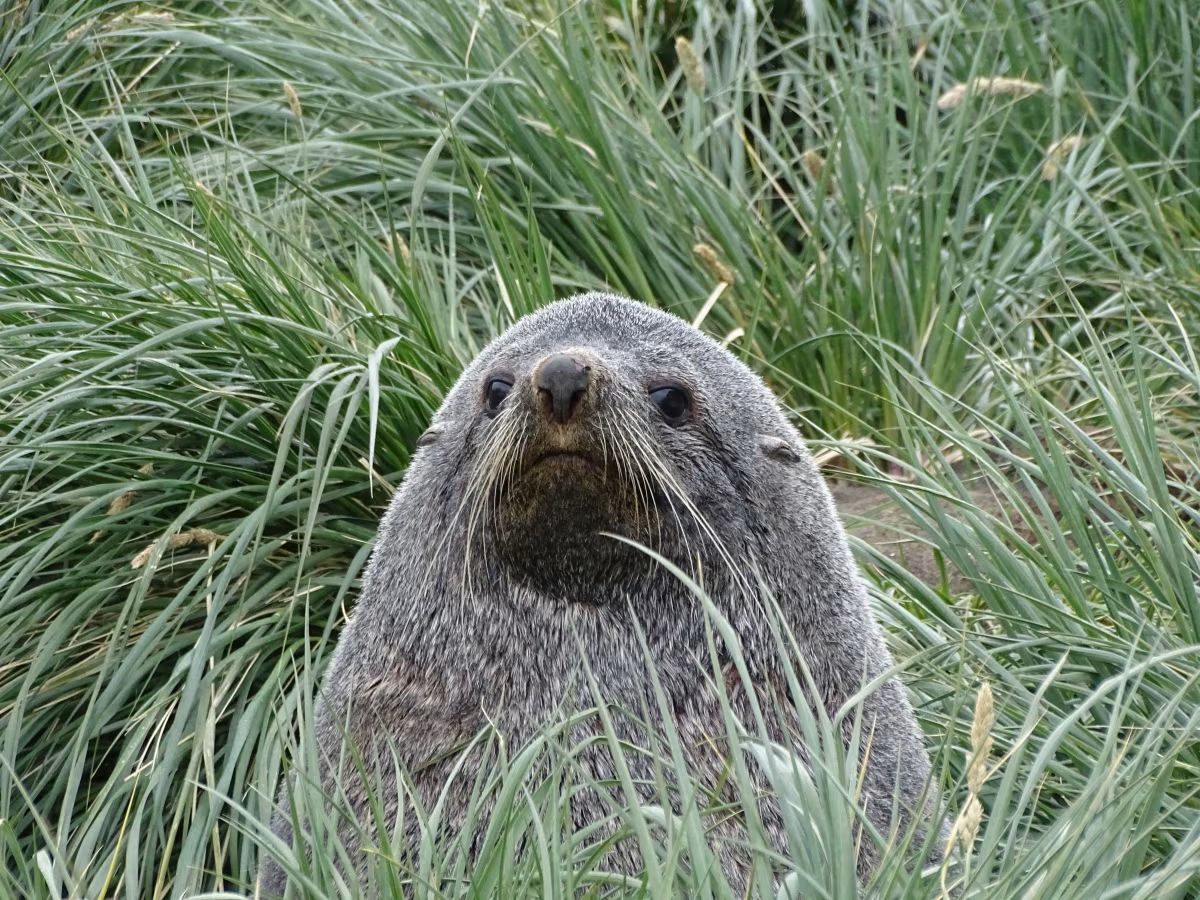
Antarctic birds are likewise plentiful, even if you don’t include penguins: Wandering albatrosses, blue-eyed shags, and snow petrels are only some of the species you might see in Antarctica. Please check out our extensive Antarctic birds article for a fuller list.
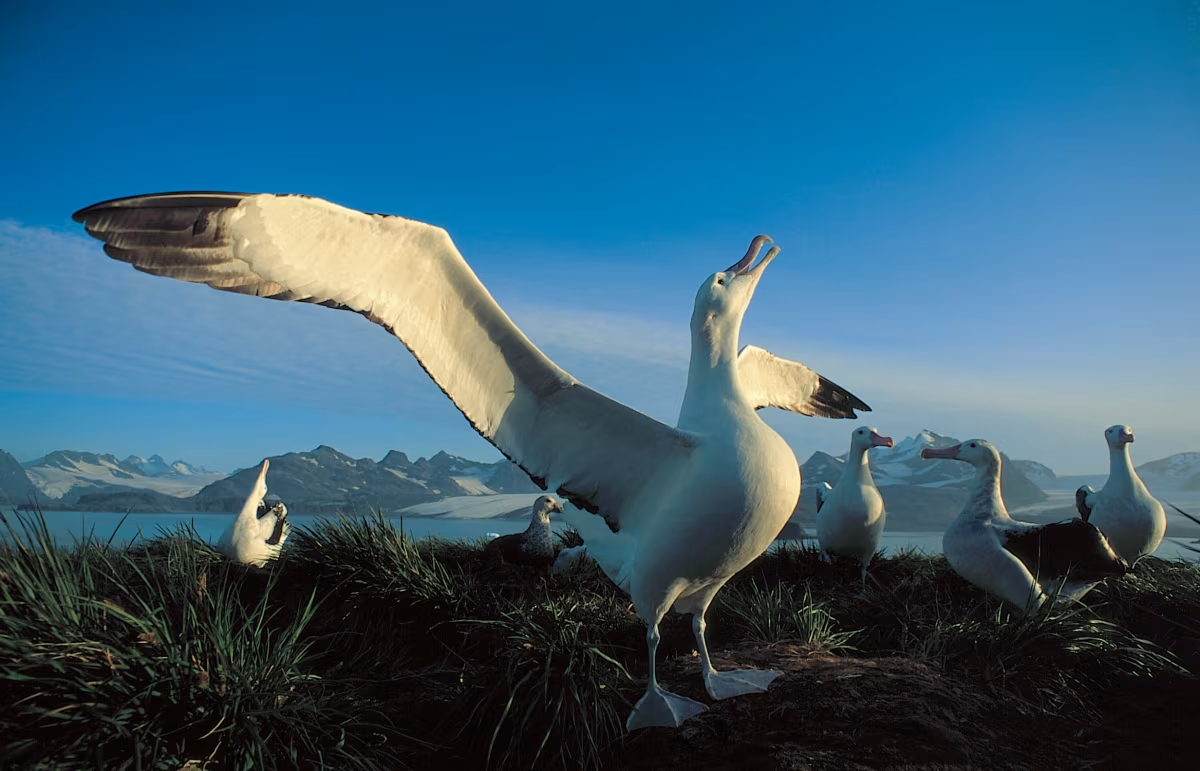
Arctic vs. Antarctic travel seasons: when to go, what to do
The tourism season for both the Arctic and Antarctica is summer.
Summer, however, occurs at different times in different hemispheres. The Northern Hemisphere (boreal) summer is May to October, while the Southern Hemisphere (austral) summer is October to April. As a tourist, you can’t visit Antarctica outside austral summer.
Also, the activities offered in each region are not as divided as their wildlife. This is because you can usually do many of the same things in both the Arctic and Antarctica.
Common expedition activities shared by both regions include shoreline walking, inland hiking or snowshoeing, and Zodiac cruises, to name just a few. Nonetheless, there are some activities that are more favorable in one region than the other.
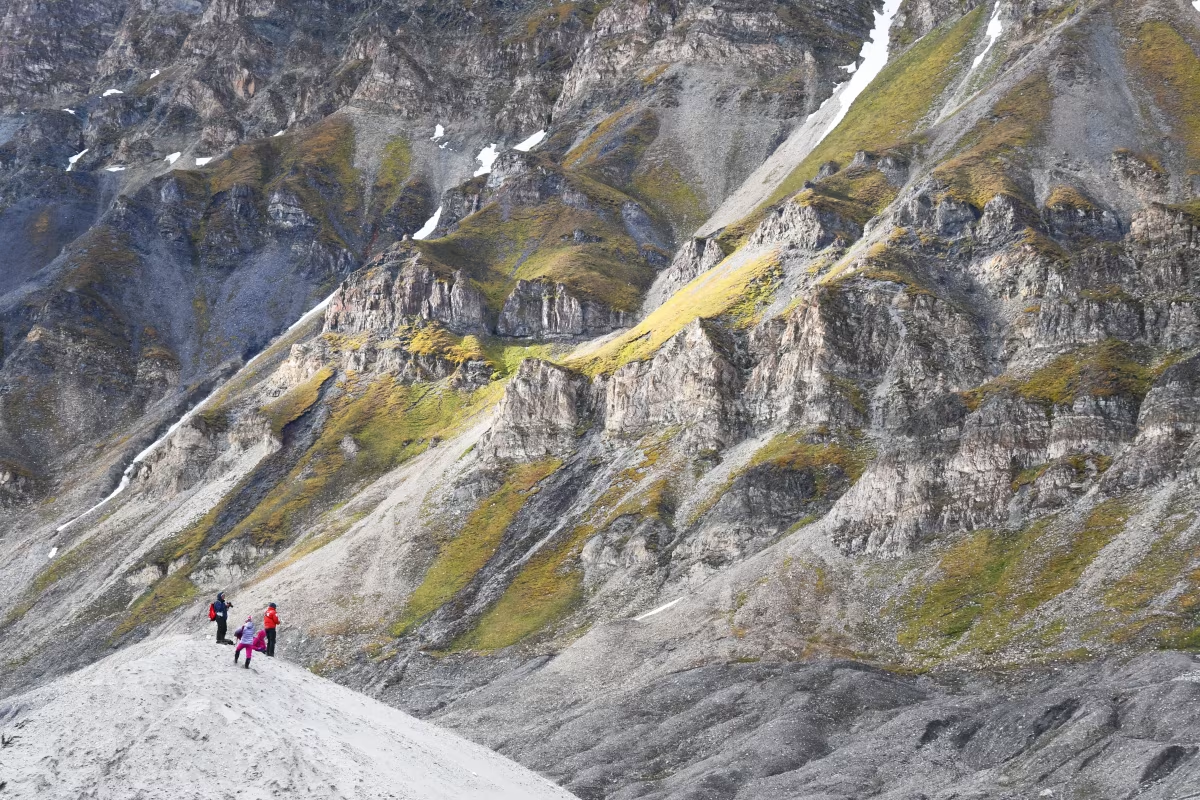
ARCTIC ACTIVITIES:
In the Arctic, you have more access to great hiking and ski-mountaineering terrain than in Antarctica. And if you love water sports, some Arctic voyages allow you to kayak around icebergs and even polar scuba dive beneath them, provided you have the required cold-water diving experience.
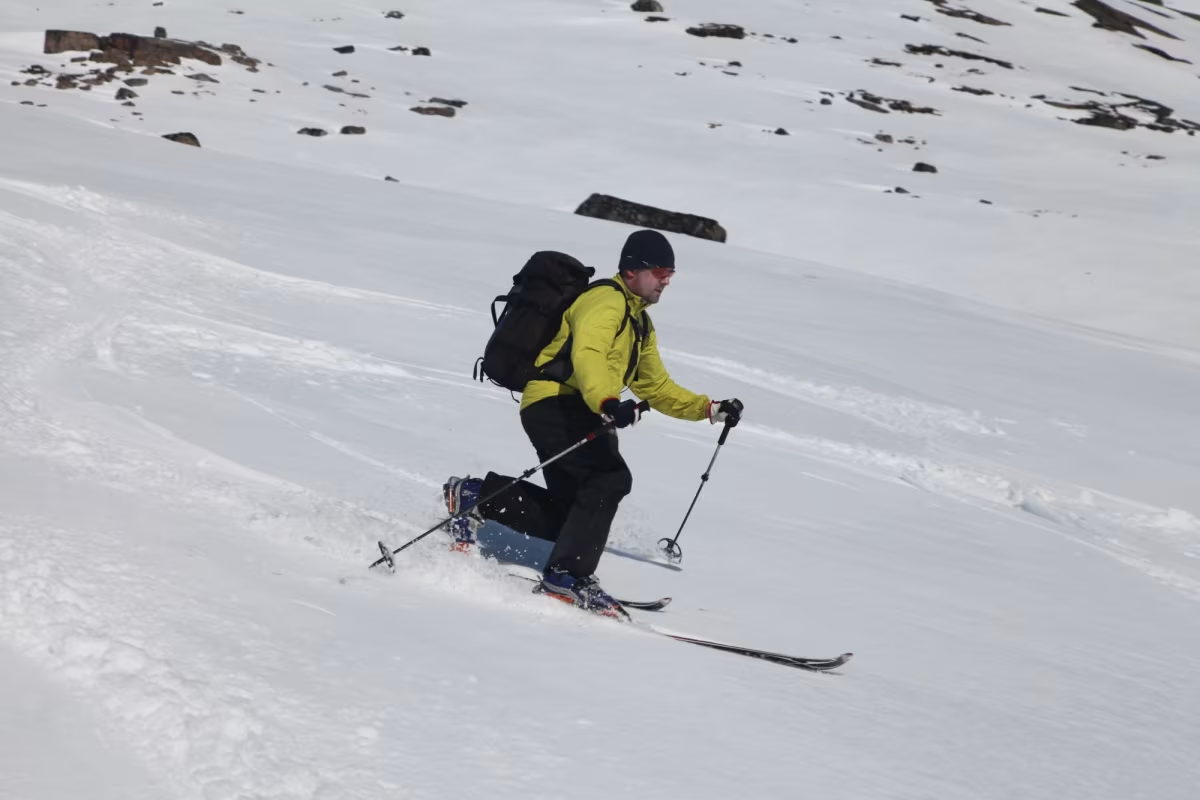
One activity specific to the Arctic is viewing the northern lights, or aurora borealis.
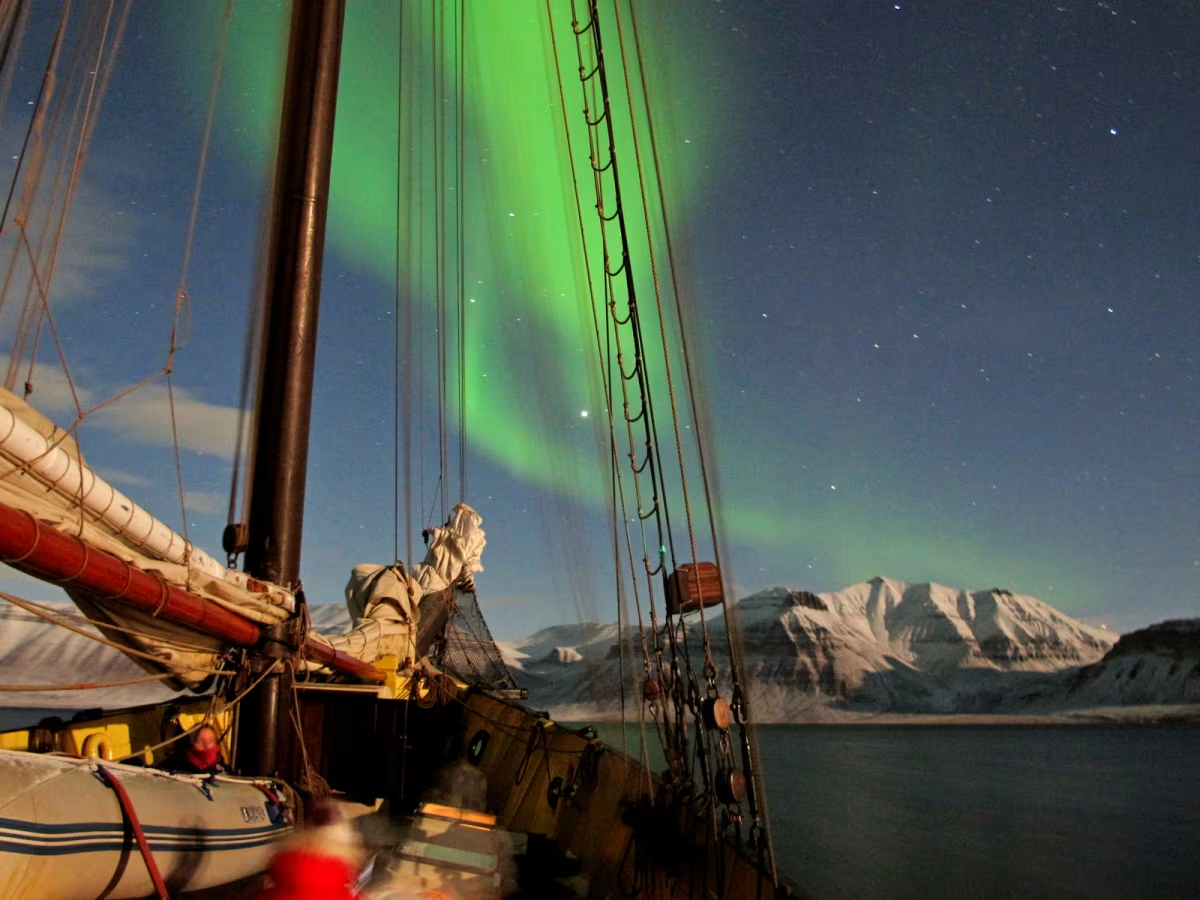
The northern lights are one of the planet’s most memorable and enchanting phenomena, and we see them anywhere from the massive fjords of northeast Greenland, the rugged islands of Northern Norway, to the polar bear hotspot of Svalbard (Spitsbergen).
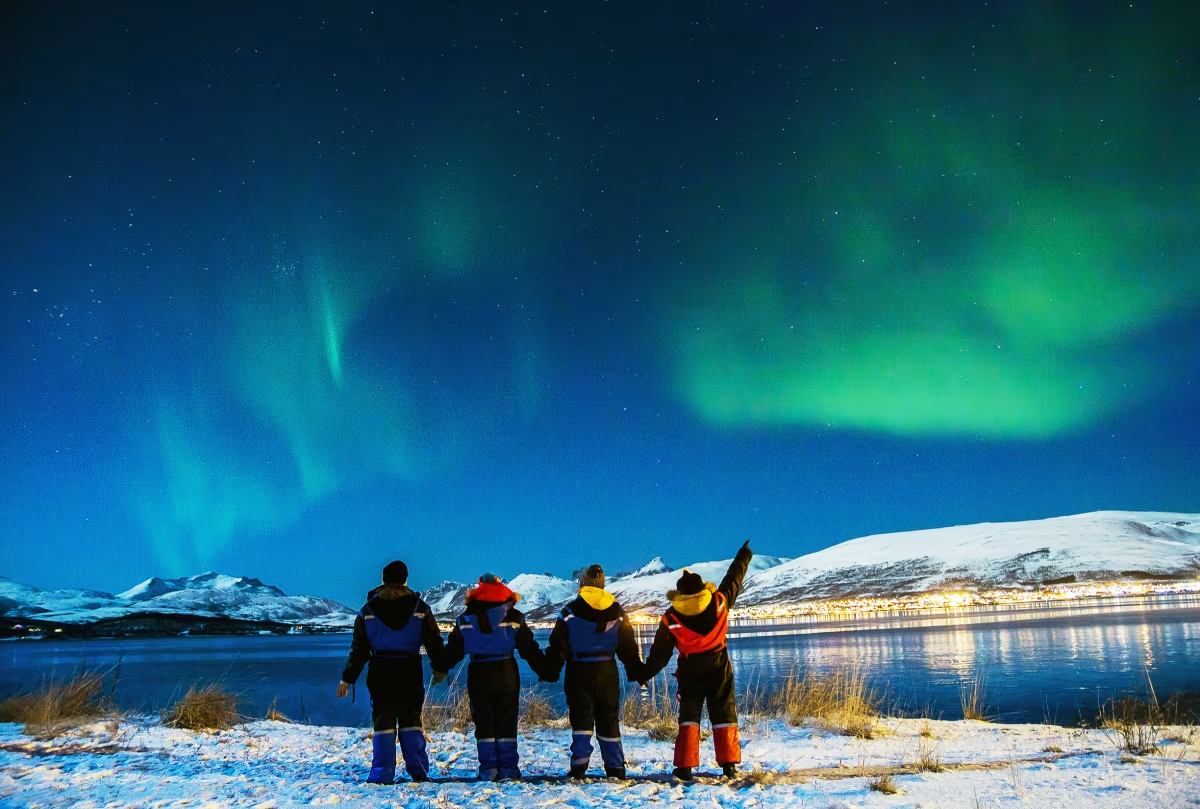
Antarctica has its own southern lights, aurora australis.
ANTARCTIC ACTIVITIES:
If the Arctic has slightly more diverse wildlife, Antarctica has a slight edge in activities: scuba diving, kayaking, and mountaineering are some of the most popular Antarctic activities. While these can be done in the Arctic, they’re more often attempted on Antarctica cruises.
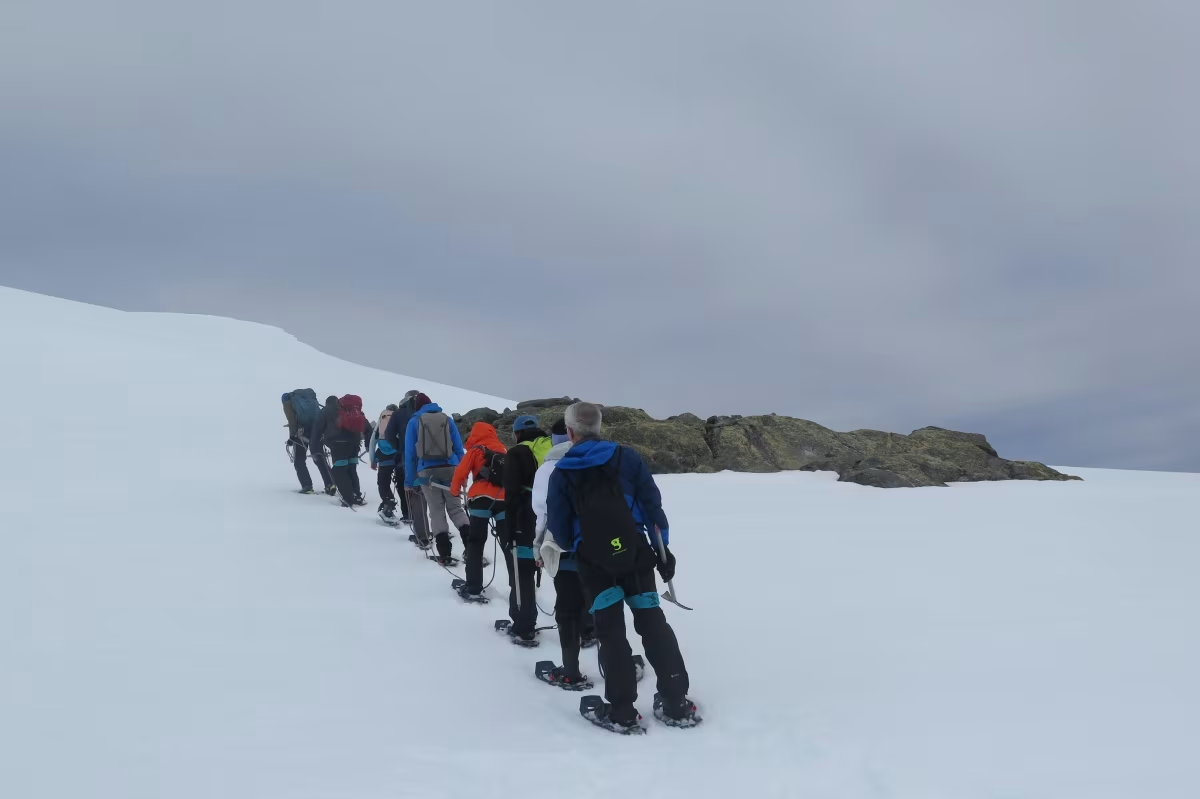
Only in Antarctica can you potentially take a helicopter tour (assuming safe conditions) to otherwise inaccessible places, like the emperor penguin colony of Snow Hill Island.

Outdoor Antarctic activities are especially abundant on our Basecamp trips, which we do to only a limited degree in the Arctic. Our Basecamp Antarctica cruises feature a numerous activities, such as shoreline camping, a surefire way to feel like a true polar explorer.
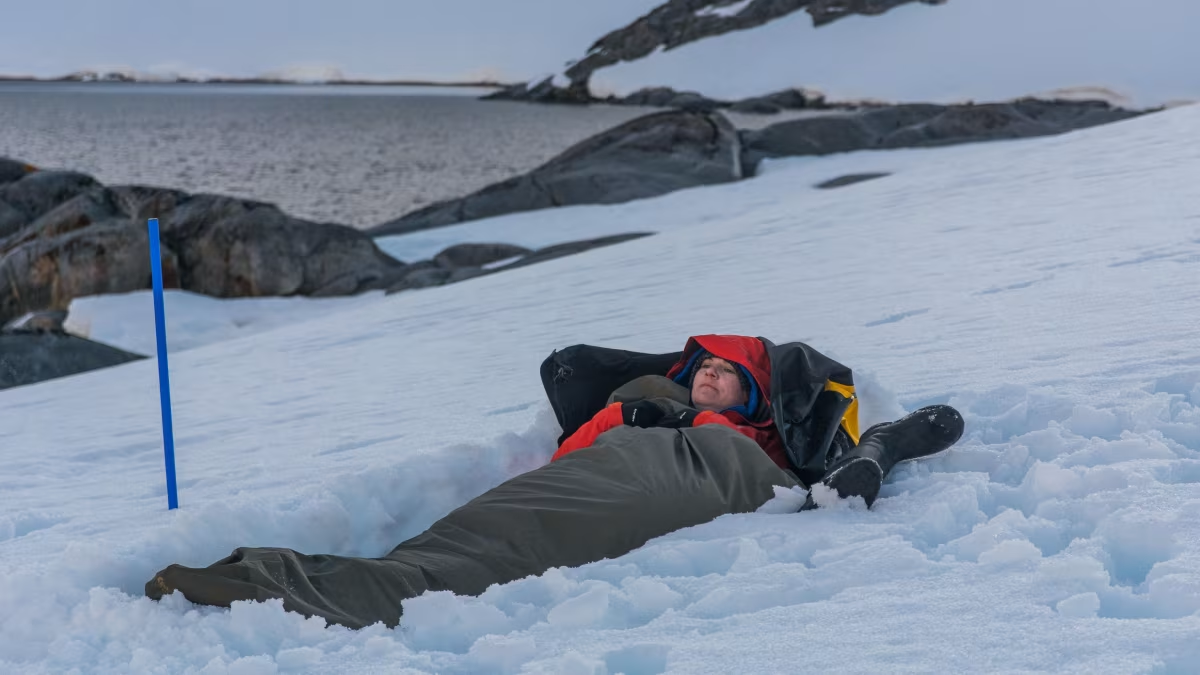
We’re also one of the few tour operators to provide polar diving trips in Antarctica. These exotic adventures are an expanding part of our program and intended to acquaint you with curious seals, dazzling ice formations, and all the unique colors beneath the polar seas.
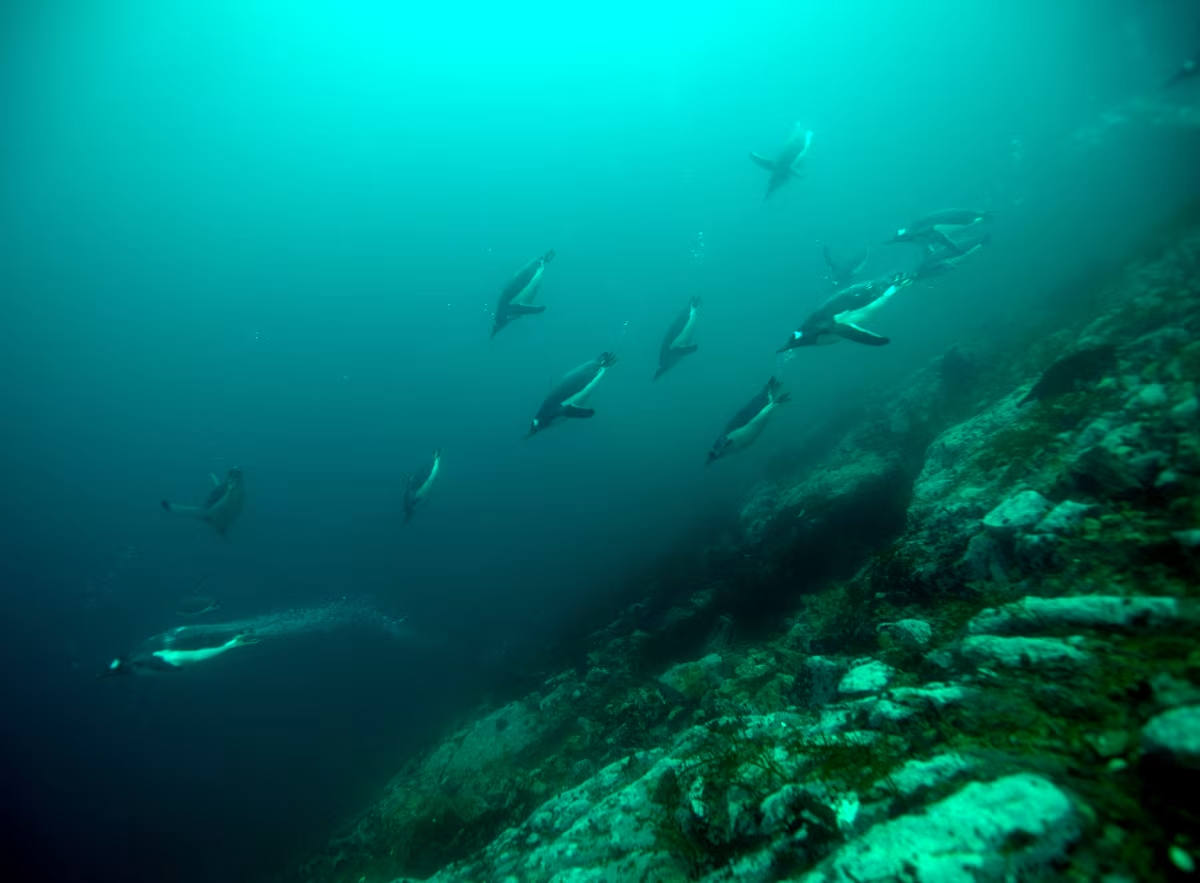
SPECIAL ACTIVITIES:
In both the Arctic and Antarctica, Hondius special activities are free and include photo / video workshops led by media professionals and interactive presentations by our guides.
Our media workshops teach you useful techniques for capturing the wonders of the polar world, while our presentations explore such fascinating topics as polar wildlife, weather, and ice formations. Many of the guides who lead these activities work in glaciology, climatology, and other natural sciences.
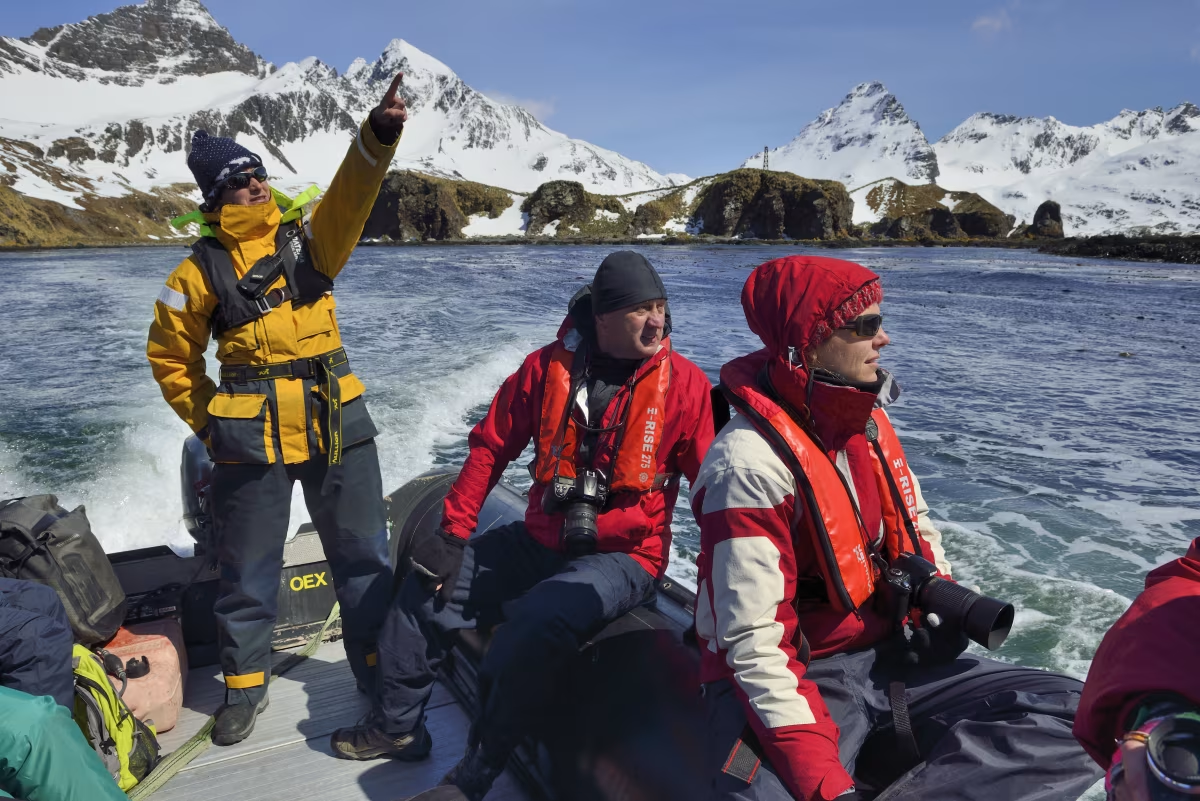
Arctic vs. Antarctic regions: ice formations and ports of entry
As we have demonstrated, the Arctic and Antarctica are distinct in their wildlife and outdoor activities. But despite their visual similarities, they are also distinguished by their ice formations.
Also, it cannot be ignored that going to either region is a large undertaking. So to save you unnecessary headaches, we have provided a rundown of the embarkation and disembarkation ports you’ll visit when traveling to and from the Arctic or Antarctica.
First, we’ll tackle Arctic vs. Antarctic terrain and ice formations.
Though the Arctic and Antarctica may look similar, they’re in fact virtually opposites: The Arctic is a frozen ocean surrounded by landmasses, and Antarctica is a frozen landmass surrounded by ocean. And while both regions have icebergs, glaciers, and snow, the Arctic has less of all three than Antarctica.
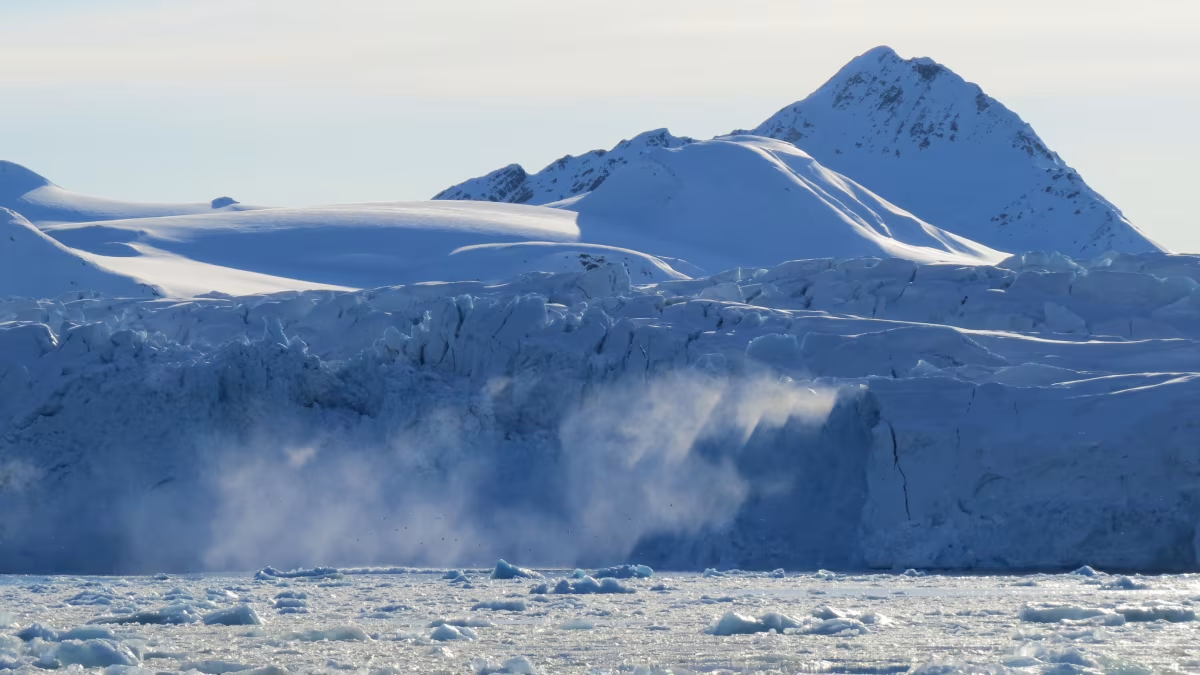
ARCTIC ICE FORMATIONS:
In the Arctic, you’ll see fewer and smaller glaciers. The icebergs are also more irregular in shape, and the snowpack lies in fewer places and is less deep.

Nevertheless, Arctic sea ice is generally thicker. The reason for this has to do with Arctic geology: Arctic sea ice remains trapped within the large surrounding land masses, staying longer in freezing conditions and therefore building up more than in Antarctica.
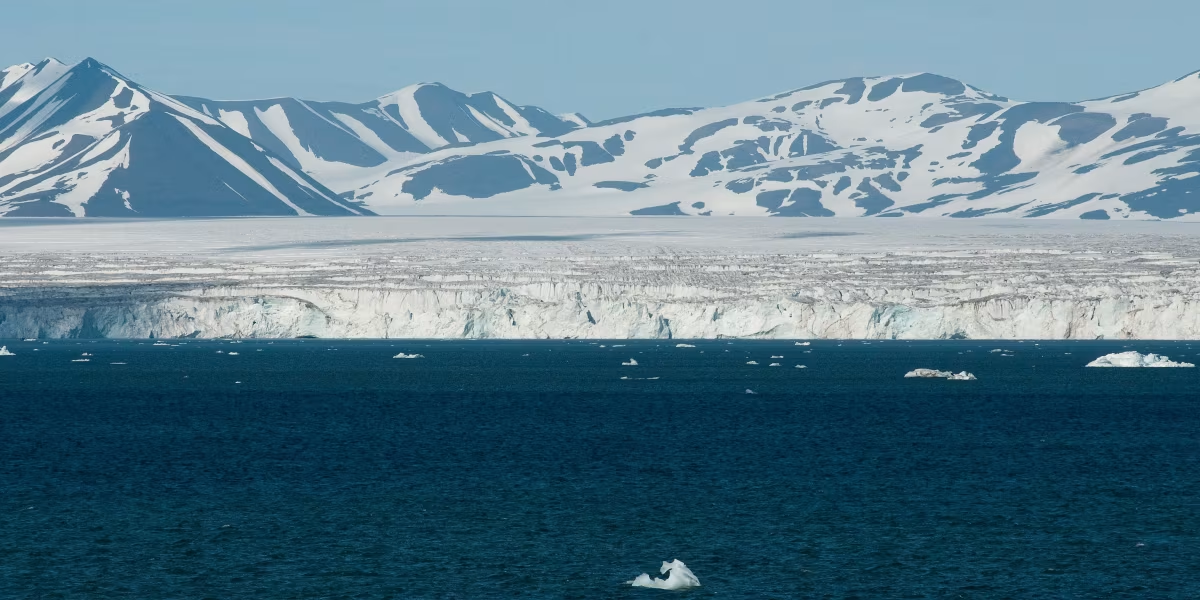
Greenland is the one Arctic location we visit where the icebergs are all unusually large, as they come straight of the island’s vast ice sheet and run aground nearby.
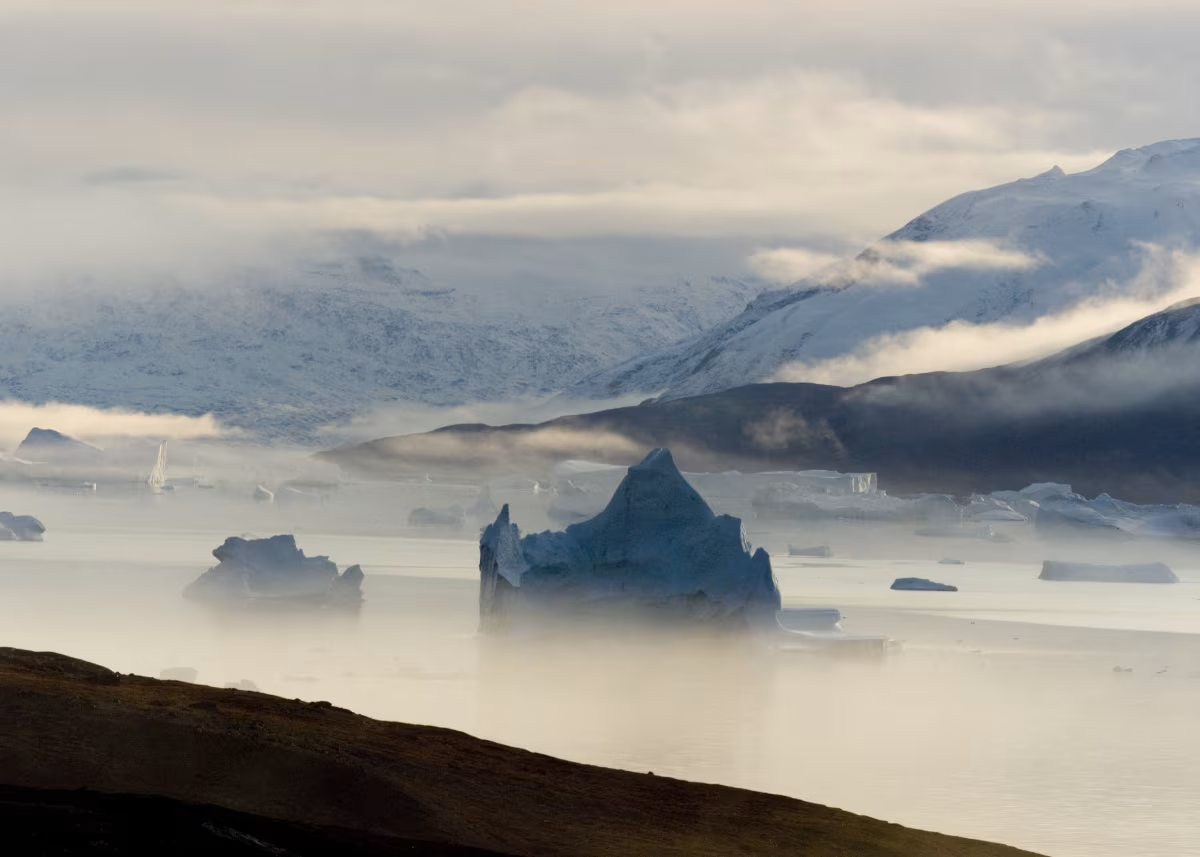
ANTARCTIC ICE FORMATIONS:
Antarctica’s glaciers, icebergs, and tabular bergs can be colossal. And because its sea ice in that region is not bounded by continents as in the Arctic, it is free to float to warmer waters in the summer and dissipate.
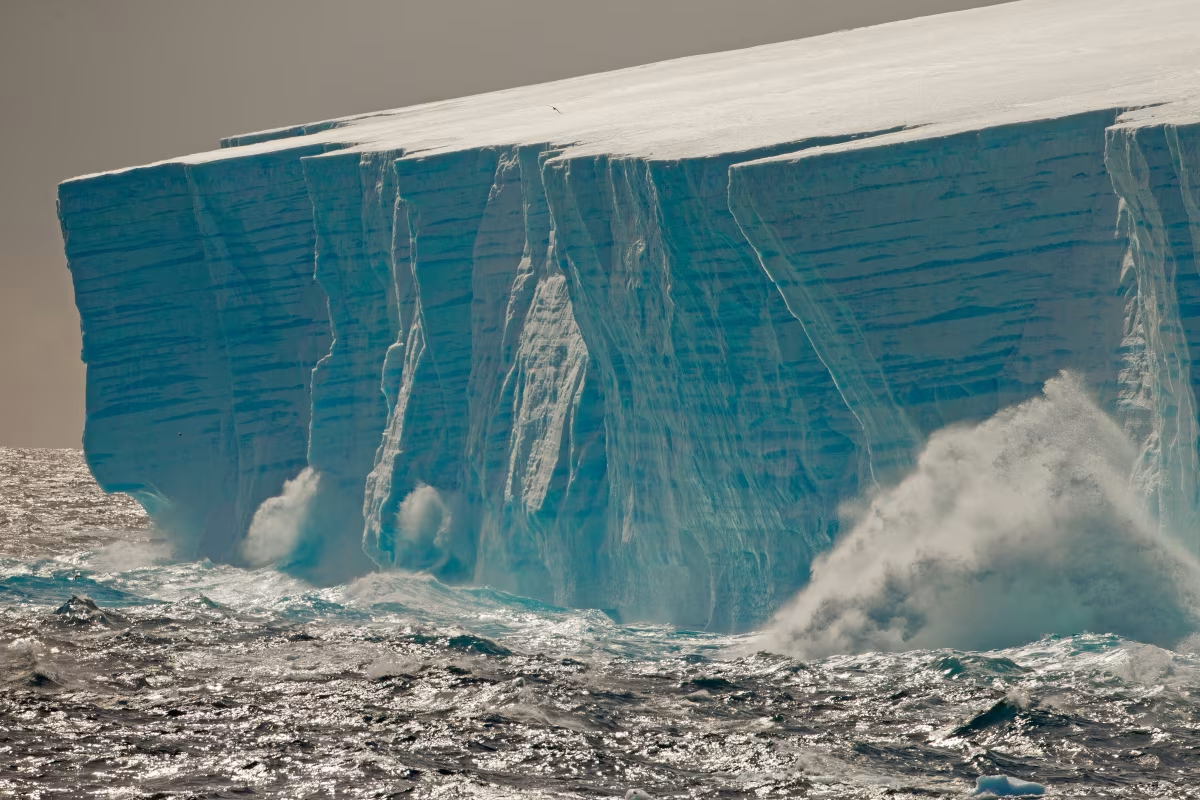
This degree of dissipation does not occur in the Ross Sea or Weddell Sea, however, where sea ice can stay all summer long – particularly in the Weddell Sea.

Also, Antarctica’s icebergs and glaciers are larger, smoother, and more symmetrically shaped than those you’ll find in the Arctic. If you are bothered by crooked paintings or uneven porches, then, you may find better peace of mind in the far south.
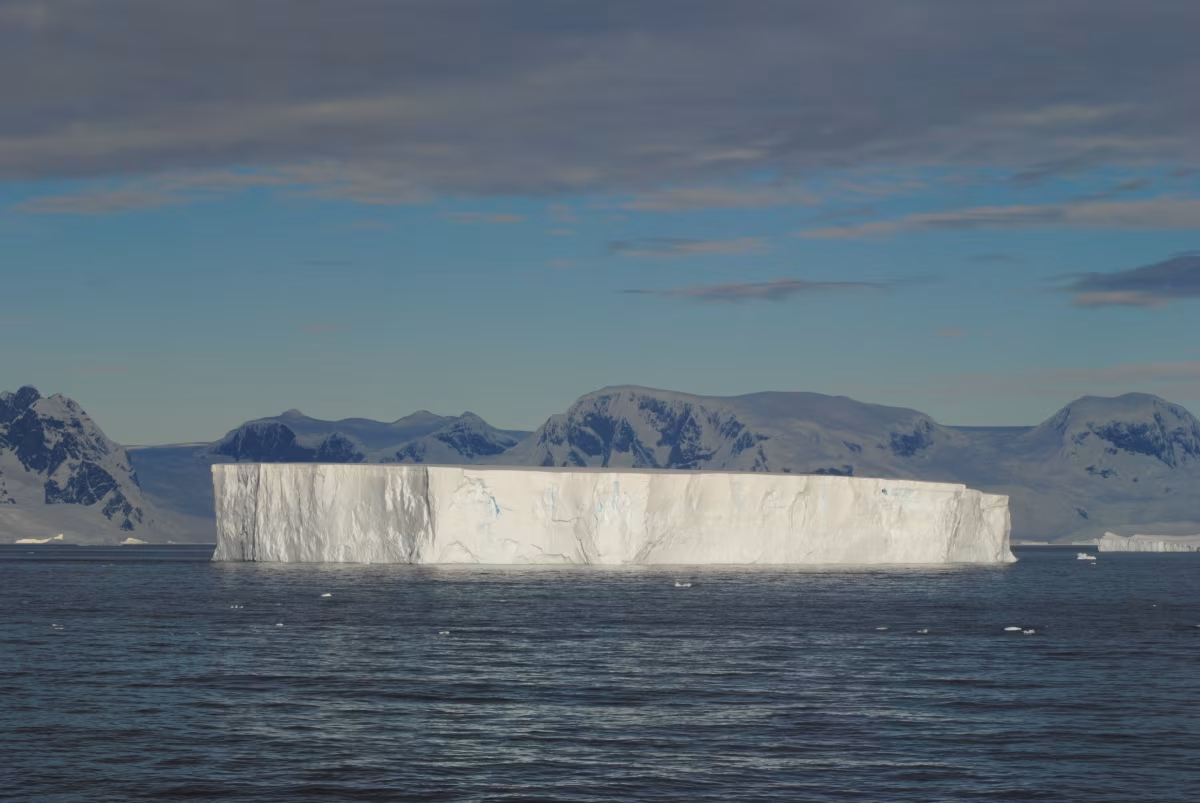
ARCTIC PORTS:
When traveling to the Arctic, you will pass through one of three key ports: Longyearbyen, Tromsø, or Akureyri. Though Constable Pynt is not a port, you might fly into or out of it.
You might even visit more than one port, depending on your voyage. Norway cruises only use Tromsø, and Svalbard cruises use Longyearbyen. Greenland trips mostly use Constable Pynt, but they may also stop in Akureyri if they include Iceland.
All these locations are compelling, but Tromsø and Akureyri are the most culturally historic. Longyearbyen is a former mining town that is turning into a cozy tourist hub, and Constable Pynt’s charm is its complete and utter isolation.

ANTARCTIC PORTS:
Antarctica has fewer points of entry than the Arctic: Ushuaia and Puerto Madryn, both in Argentina, are probably the only ports you’ll see before continuing to Antarctica.
Ushuaia has developed into a charming resort town where you can enjoy lively streets, fine museums and galleries, and beautifully mountainous surroundings.
Puerto Madryn is also a fun hub. It offers long sandy beaches, a profusion of dinosaur fossils inland, and the chance to see southern right whales off nearby Peninsula Valdez.
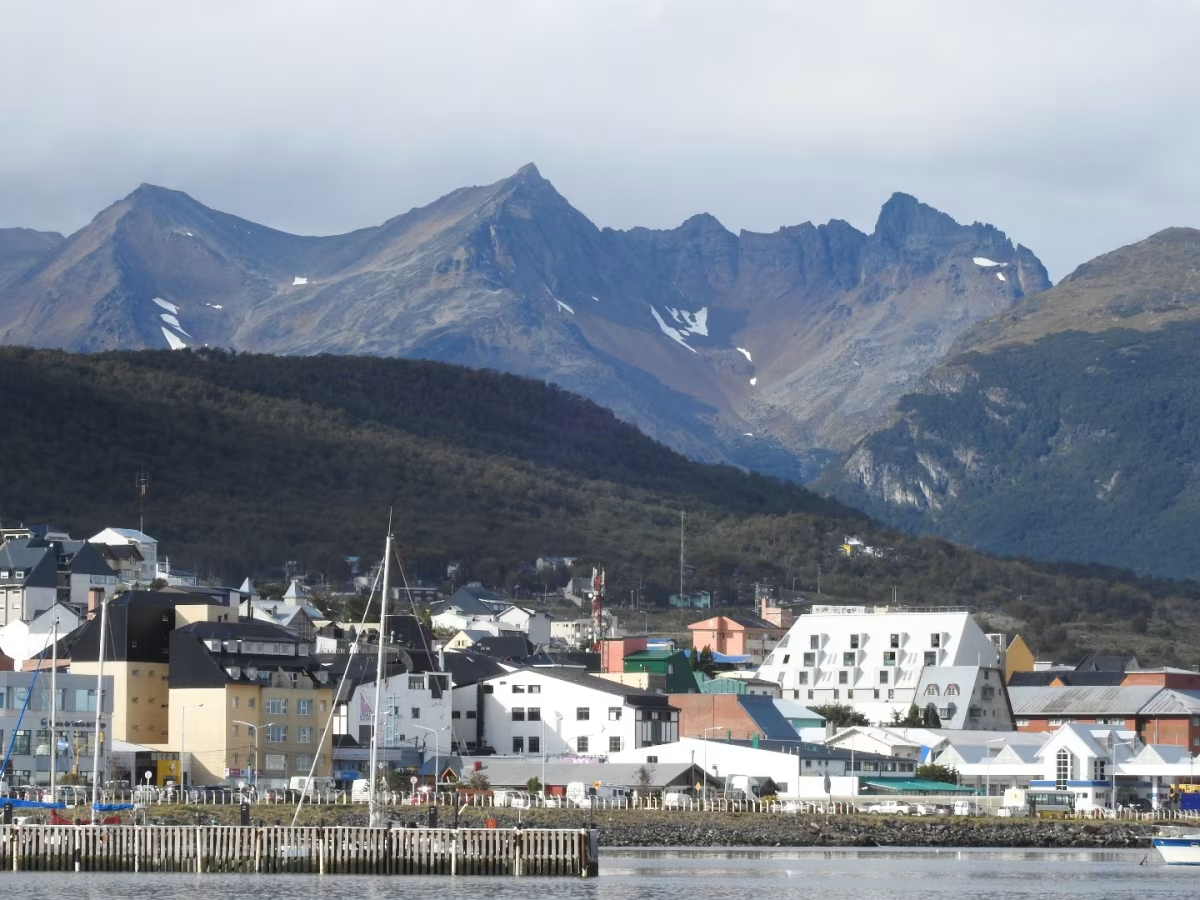
SPECIAL NOTE ON PORTS:
Most ports require you to fly into them before pushing on to your final destination. But from the two main Antarctic ports, you’ll also have to cross the Drake Passage to reach Antarctica.
And, well, the Drake Passage isn’t known as the Antarctic “rite of passage” for nothing. It is also part of the reason we sell such great seasickness meds and have written on natural seasickness remedies.
Just to be clear, however, visiting Antarctica is more than worth enduring a little motion sickness. But before booking an Antarctic cruise, we highly recommend you read our blog on what to expect when crossing the Drake Passage.
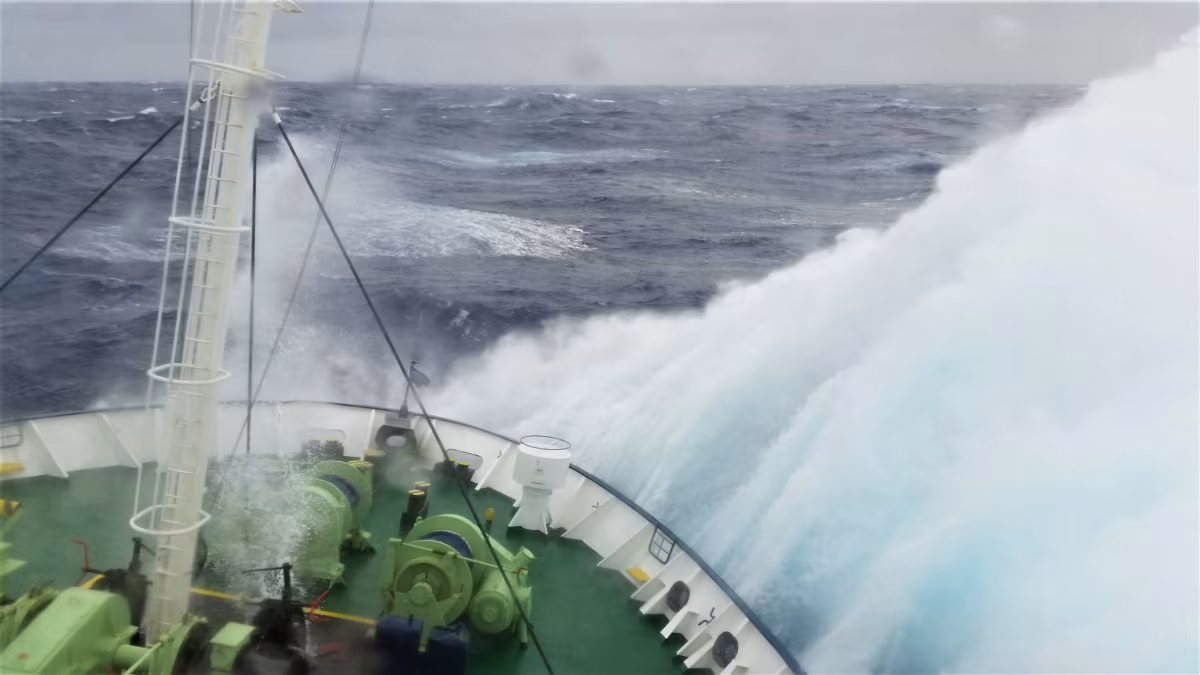
Arctic vs. Antarctic weather: what to pack to for the snowpack
One of the most frequently asked questions we get about polar travel is how cold it is in the Arctic or Antarctica. Should you pack a few sweaters and your favorite winter jacket, for instance, or should you pretend like you’re going out for extended deep-sea diving?
Though both the Arctic and Antarctica are characterized by short and cool summers with long and cold winters, the Arctic is consistently warmer than the Antarctic.
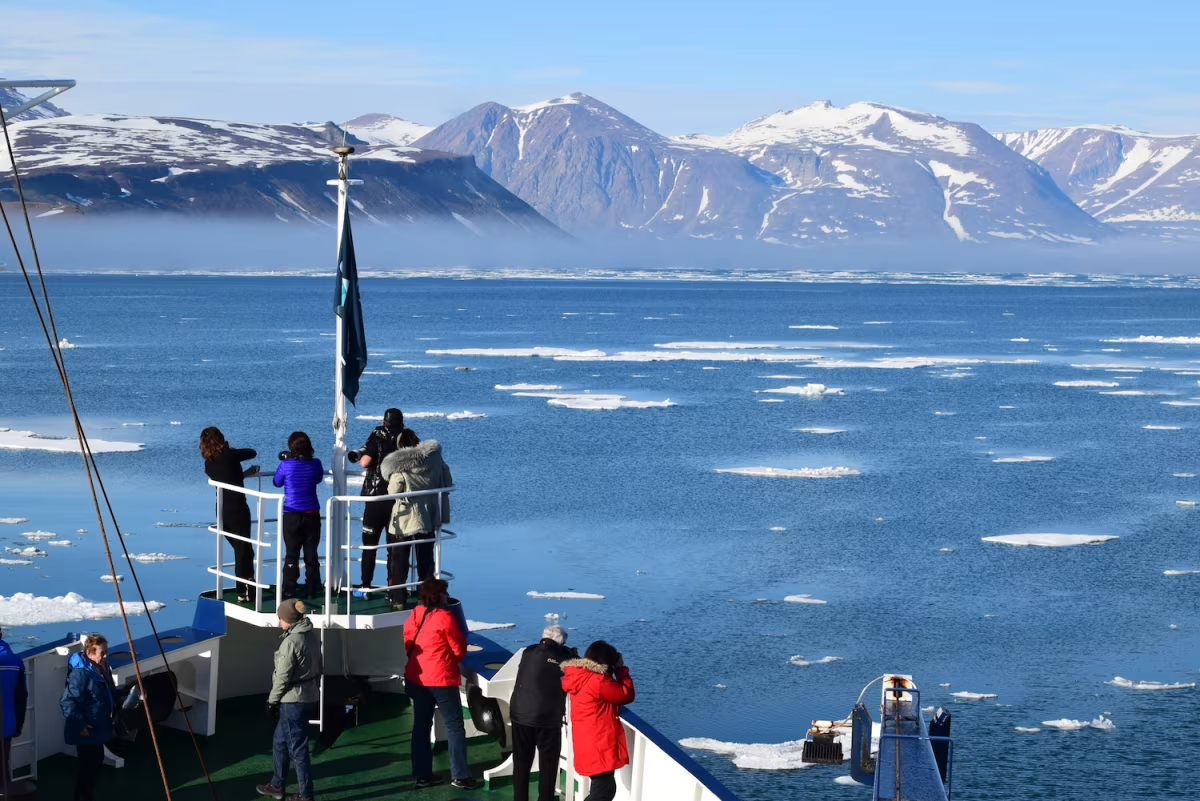
ARCTIC WEATHER:
Arctic summers usually range from 5°C (41°F) to 10°C (50°F), depending on where you go. But just as in Antarctica, your location and in particular your latitude will determine whether you’ll experience slight shivers or full-on Chattering Teeth Syndrome.
Spend some time in northern Siberia and you will encounter real cold, but take a much milder Svalbard cruise and you’ll be perfectly comfortable. The same goes for Greenland and Northern Norway.
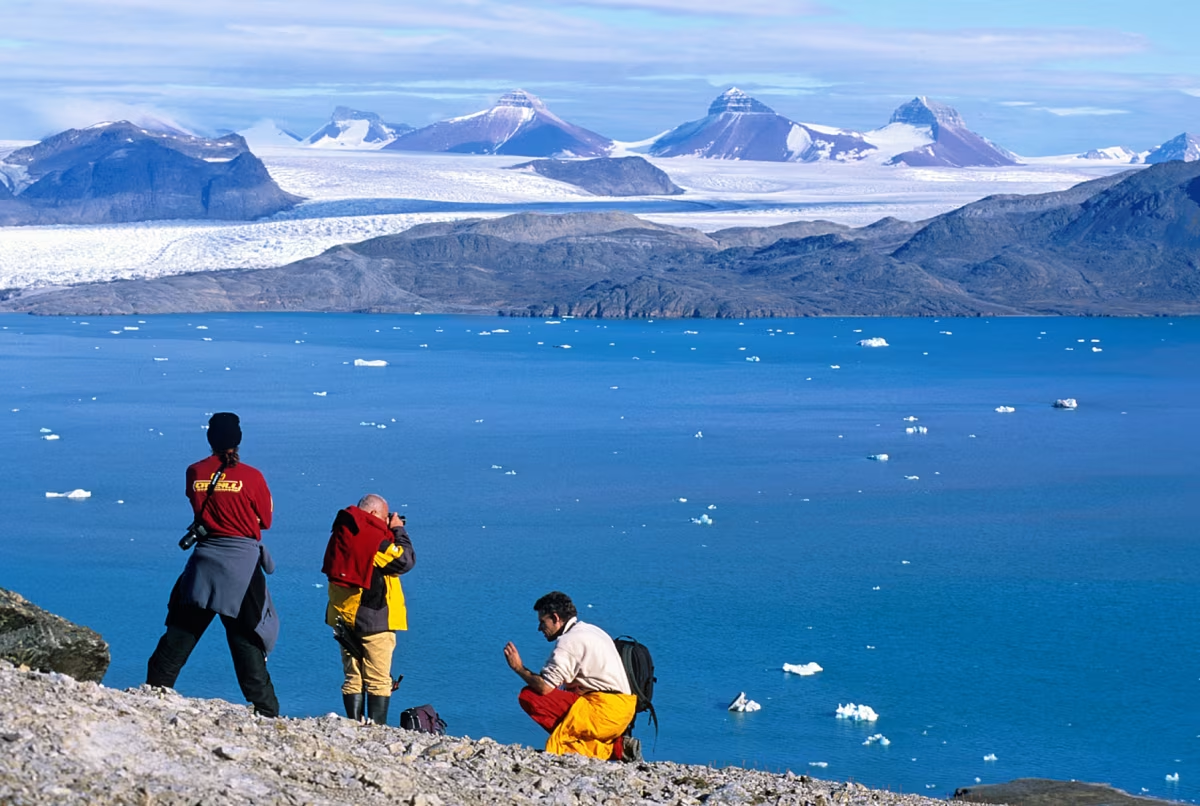
ANTARCTIC WEATHER:
Antarctica summers are usually cooler, spanning from -15°C (5°F) to 2°C (36°F). But again, this depends a lot on where you go: Princess Elizabeth Land reports the coldest temperatures, though you’re not likely to go there unless you’re researching oxygen isotope composition in ice.
We suggest you stick to places like the Antarctic Peninsula, Weddell Sea, or Ross Sea, which are balmy by comparison and offer many more wildlife viewing opportunities.
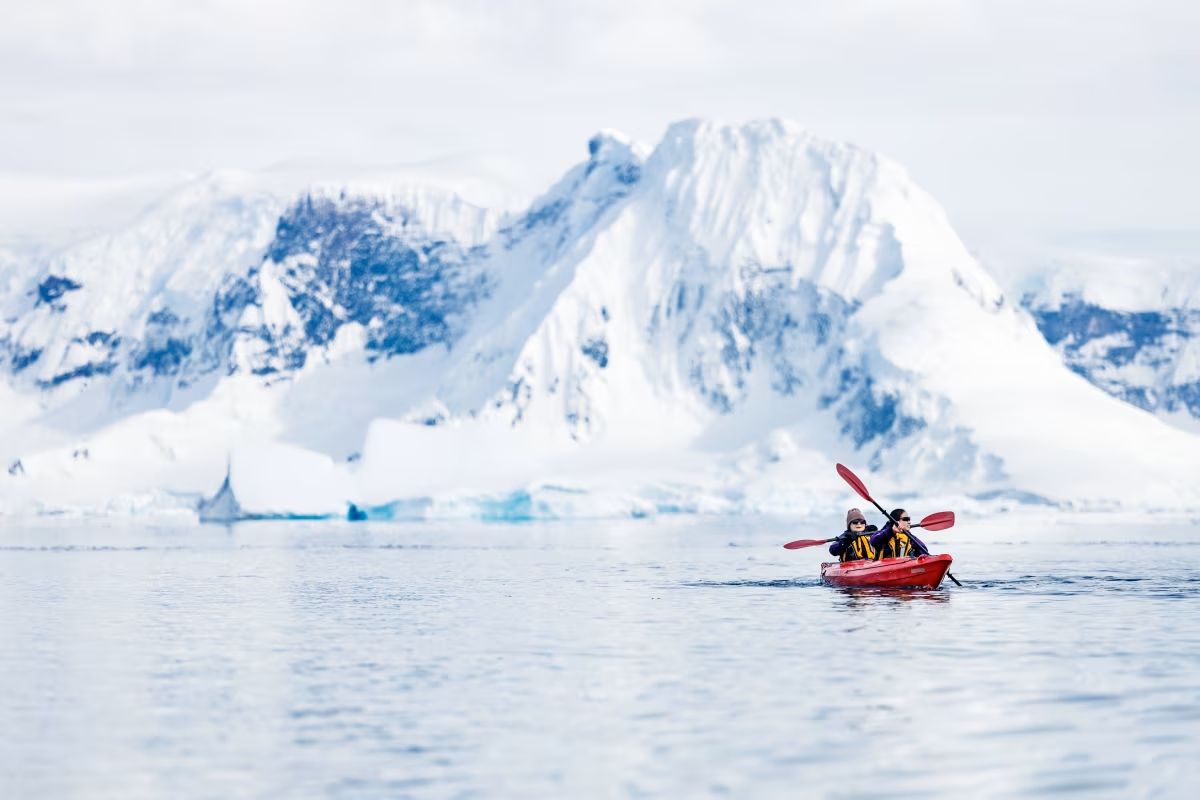
But since any polar voyage requires warm clothes, our packing suggestions do not differ much from the Arctic to Antarctica except in the number of layers you’ll strip off during your first big hike. Or if you take the polar plunge. You may notice a difference then.
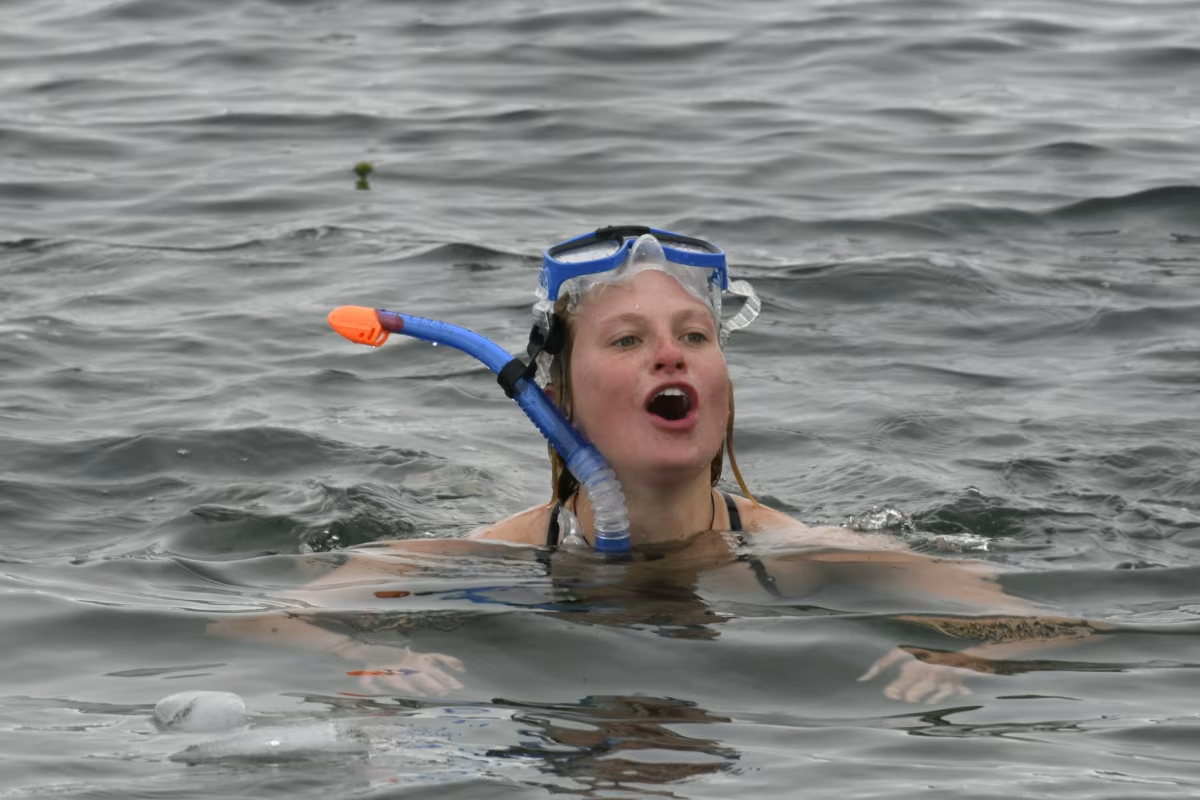
Arctic vs. Antarctic people: cultural differences
More than wildlife, activities, ice formations, or even weather, what most distinguishes the Arctic from Antarctica is its abundance or its absence of people. And yes, we’re referring only to indigenous people who’ve lived there for more than just a few seasons.

ARCTIC PEOPLE:
Between the two regions, only the Arctic has given rise to a native population: Inuit, Saami, Yupik, Inupiat, and Chukchi are all indigenous Arctic peoples. They have survived in the harsh environment by hunting, gathering, and in the case of the Saami, reindeer herding.
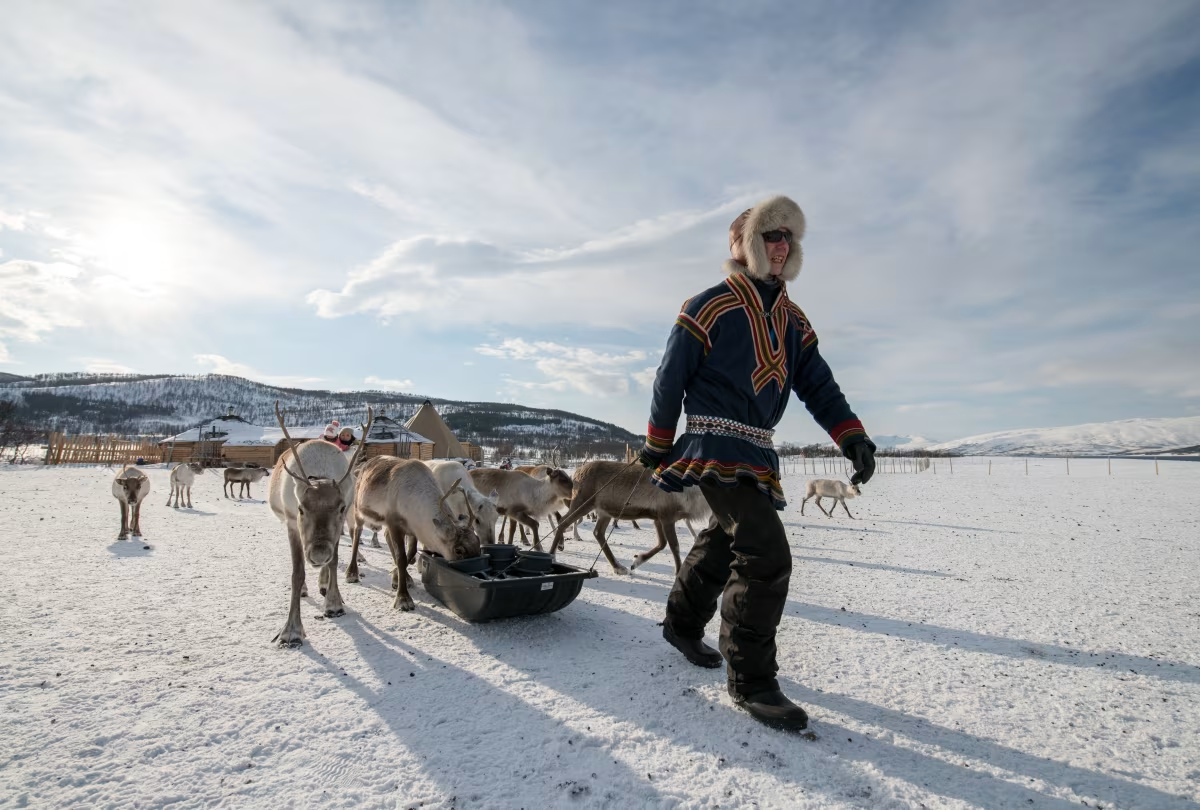
You can see the ruins, towns, and modern-day members of these rich cultures in a few key Arctic locations. Most of these are located in Greenland and northern Russia.
East Greenland voyages to Scoresby Sund, for example, seek to visit Inuit ruins at Danmark Island as well as the small town of Itooqqortoormiit. If you end up walking the streets of Ittoqqortoormiit, you’ll have a hard time not encountering Greenlandic Inuit.
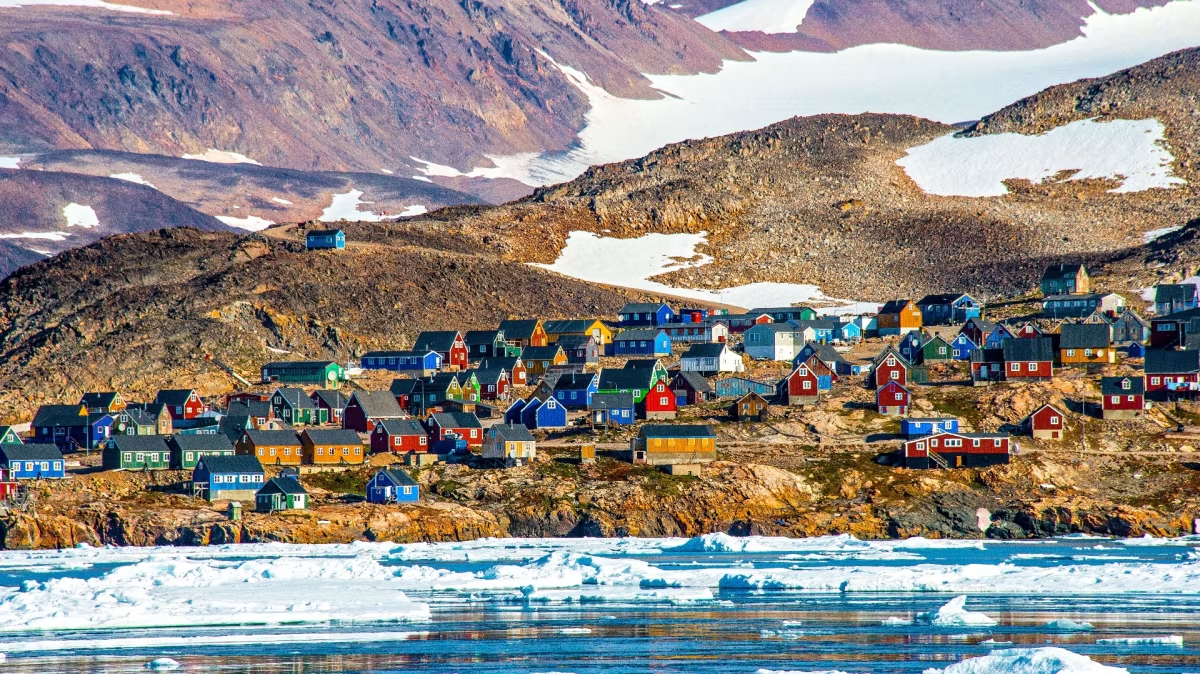
ANTARCTIC PEOPLE:
Alternately, your Antarctica cruise will introduce you to new cultures only if they’re sharing your ship. Antarctica’s geological isolation has never supported indigenous human life.
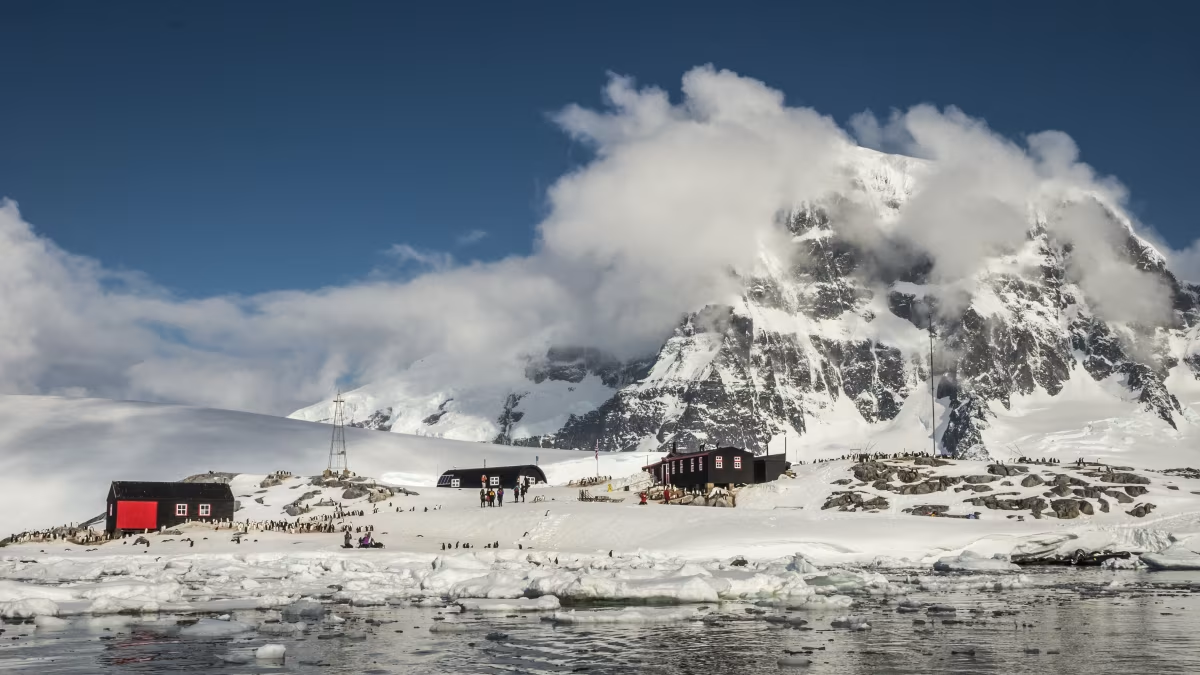
This is not to say that Antarctica doesn’t offer its share of historical expedition remains, however, as well as an abundant supply of scientists and research stations: The huts of famed 1900s explorers Shackleton and Scott can be seen there, while stations like McMurdo, Brown, and Cámara are fascinating landing sites we’re occasionally allowed to visit.
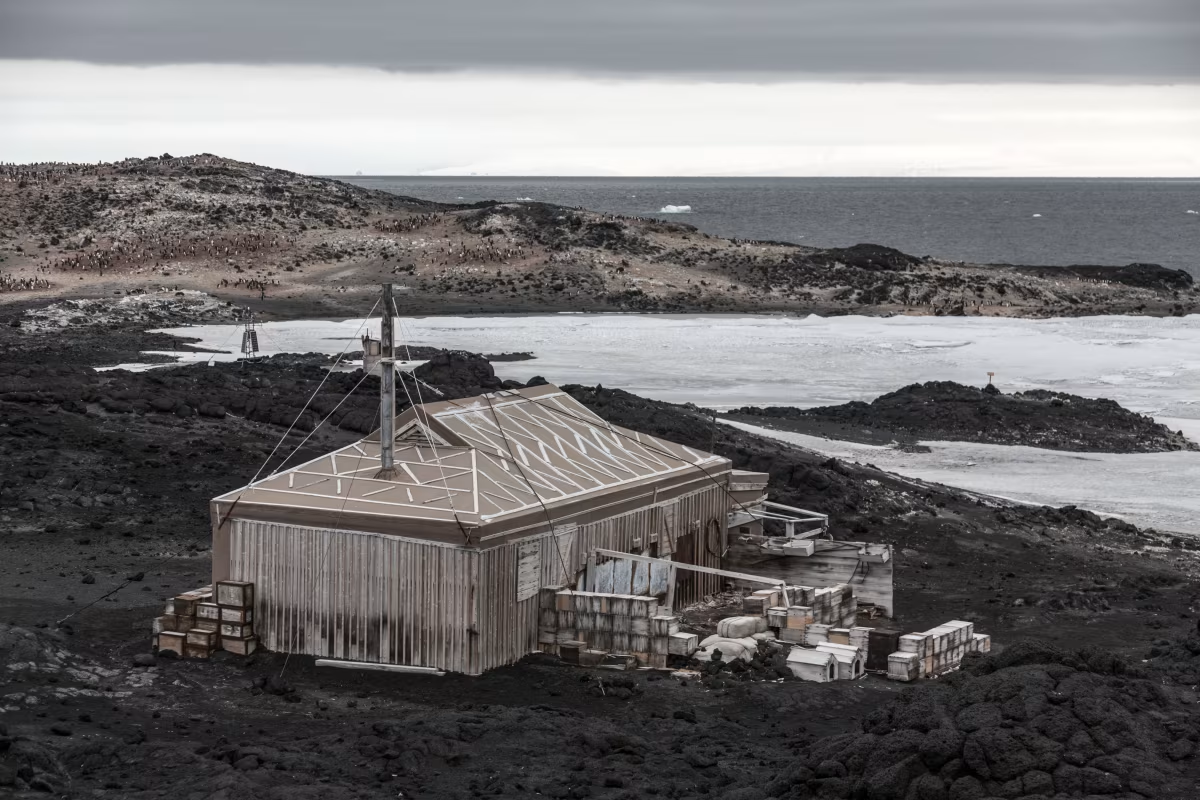
SPECIAL NOTE ON HISTORIC SITES:
Both Antarctica and the Arctic have other historic sites like mining and whaling settlements that we also visit, and sometimes we’re even able to see shipwrecks like the Guvernøren – incidentally, one of our most popular dive sites.
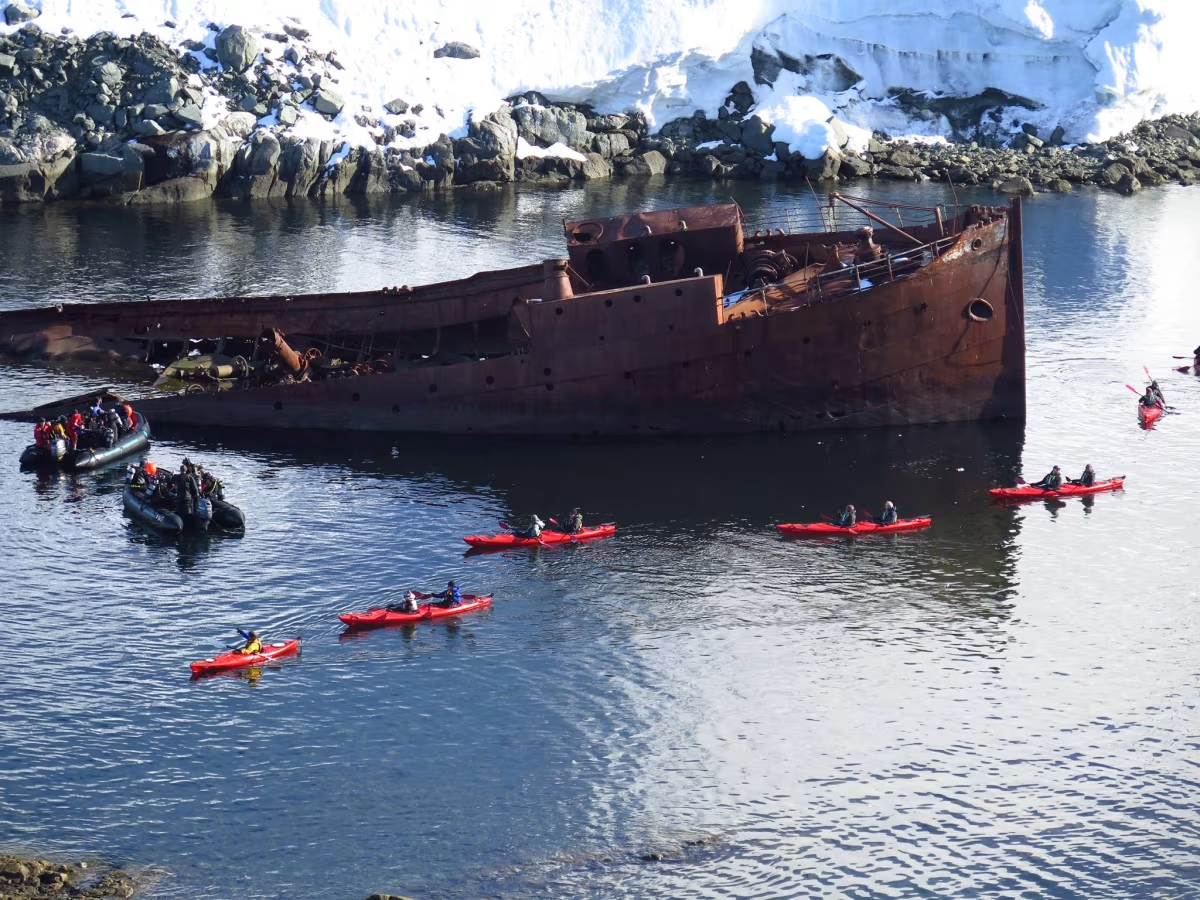
The Arctic’s Ny Ålesund and Antarctica’s Grytviken are great examples of such locations, which speak hauntingly about the former heyday of the mining and whaling industries.
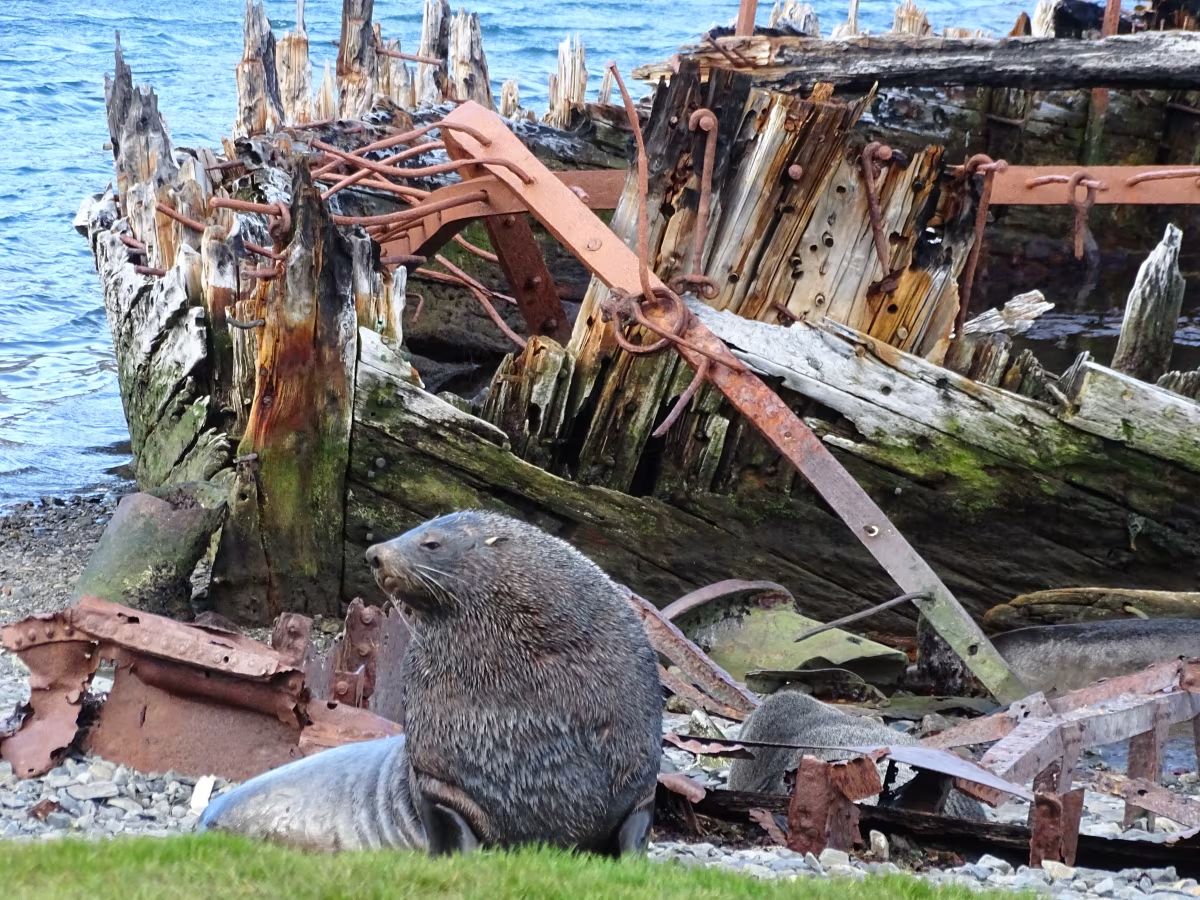
Arctic vs. Antarctic verdict: which cruise to take
This article represents our best efforts to put the Arctic vs. Antarctica question into tidy, travel-oriented, entertaining terms. But truly comparing these two wild and wildly unique wildernesses is like making a parent choose their favorite child.
They probably couldn’t if they tried. And if they did, it would just make everyone sad.
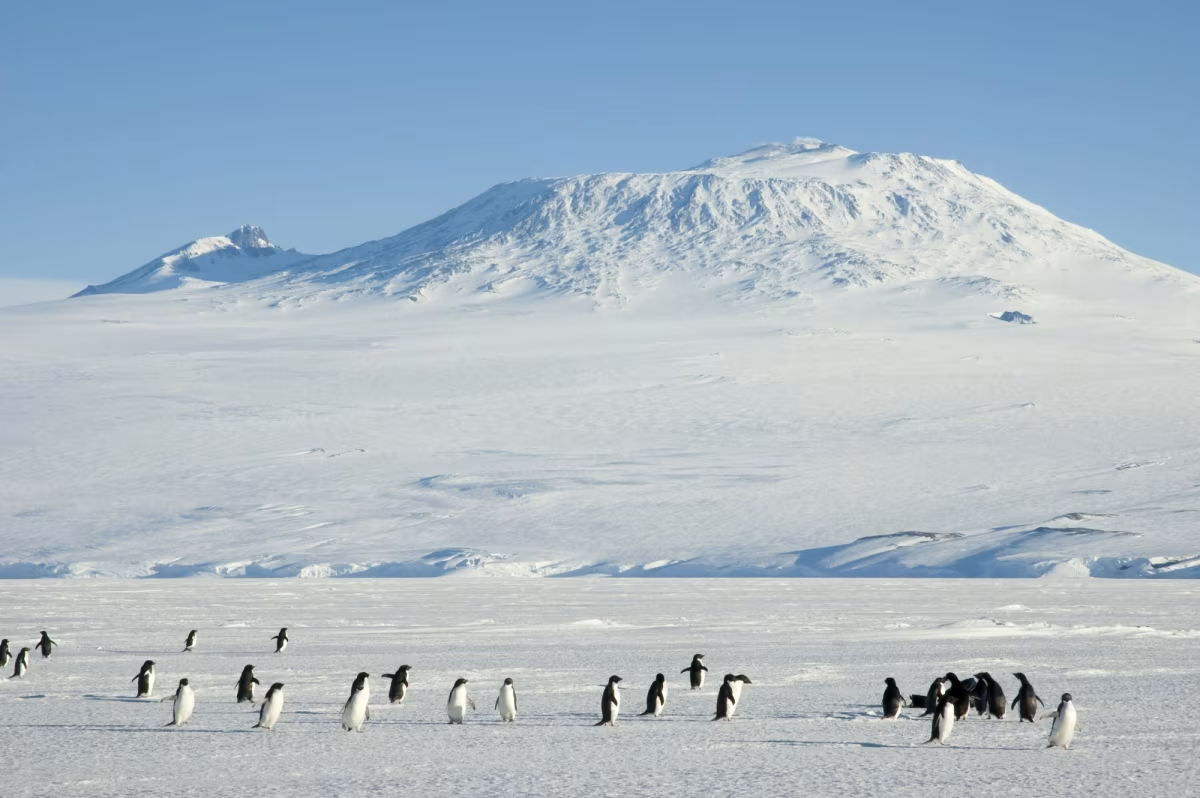
On top of that, a simplistic answer would only serve to bulldoze over the limitless peculiarities that make the Arctic and Antarctica so endlessly, incomparably precious.
Our humble opinion, which we’ve refined over a quarter century of polar exploration, is that the question should not be which region you ought to visit. It should be, “What do I want to experience when I get there?”
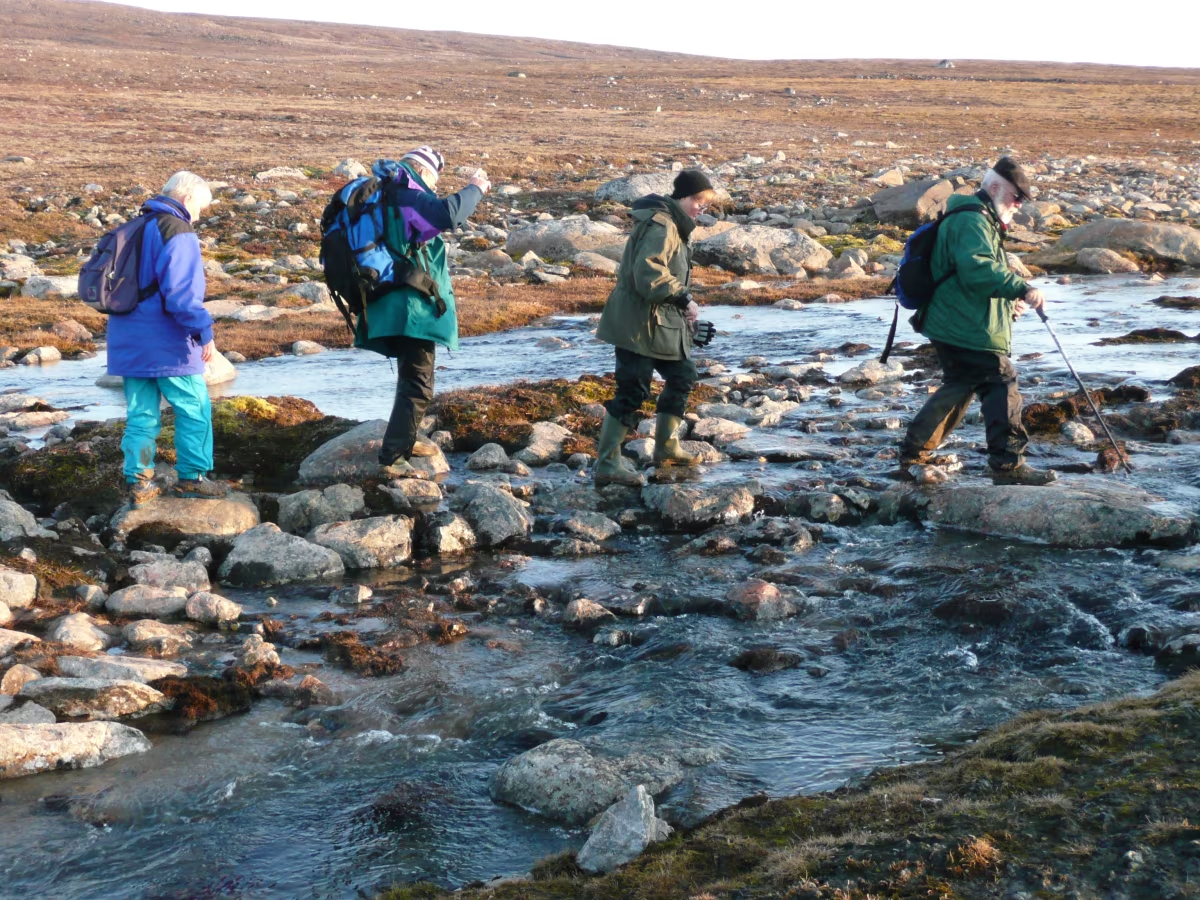
For example, do you want to see polar bears or penguins?
Do you want to be comfortably cool or breathe in the bracing polar cold?
Do you want to be near civilization or so far away from it that you’ll forget such things as streaming video and property taxes ever existed?
What we mean is, the Arctic and Antarctica cannot finally be judged against each other.
They exist by and for themselves. After all, there’s a reason people save money, book trips, and fly halfway around the globe to see places many travelers write off as frozen wastelands. And it’s not because those places lend themselves to simple measurements.
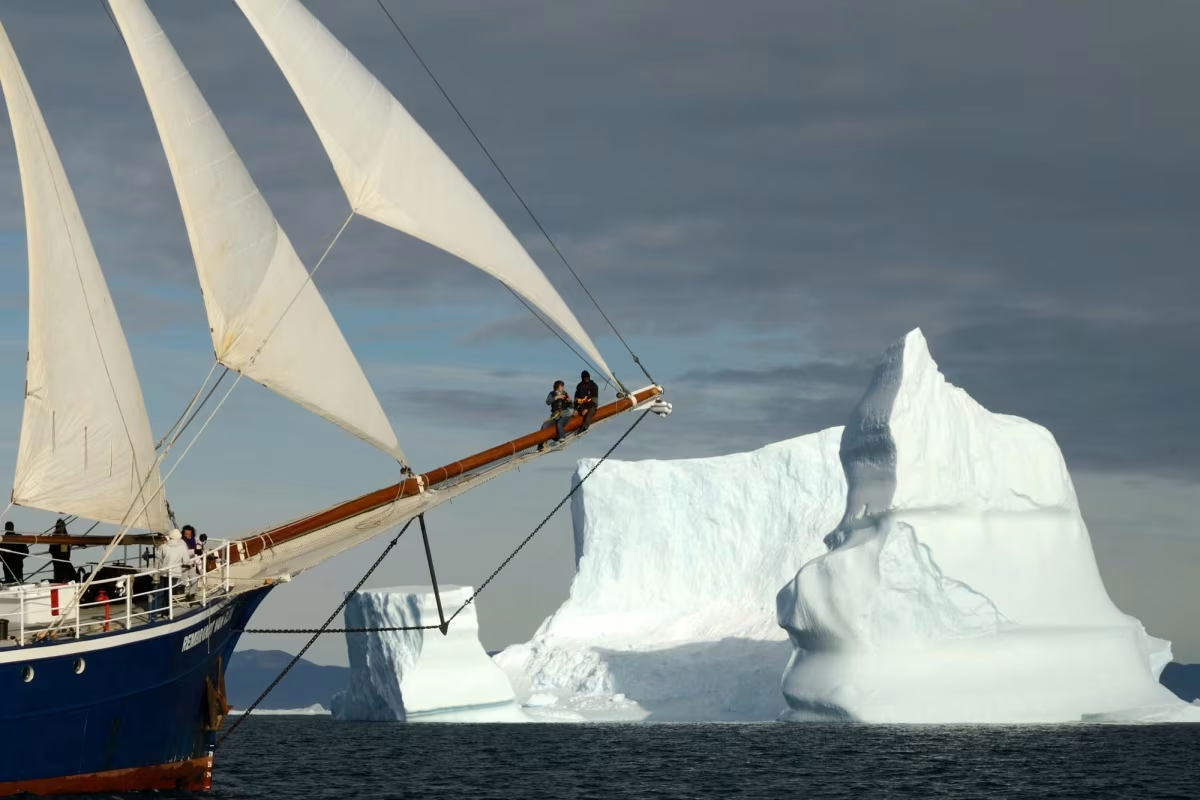
Nonetheless, we understand that it’s not easy to decide on a polar adventure. The distances are far, the costs substantial, and not everyone has the option of simply trying everything.
Even within Oceanwide, there are people who fall adamantly into Arctic or Antarctic camps. Still, we’re confident your choice will sort itself out on the basis of personal preference. What those preferences are, only you can decide.
We just hope that when you do, you’ll decide to sail with us.
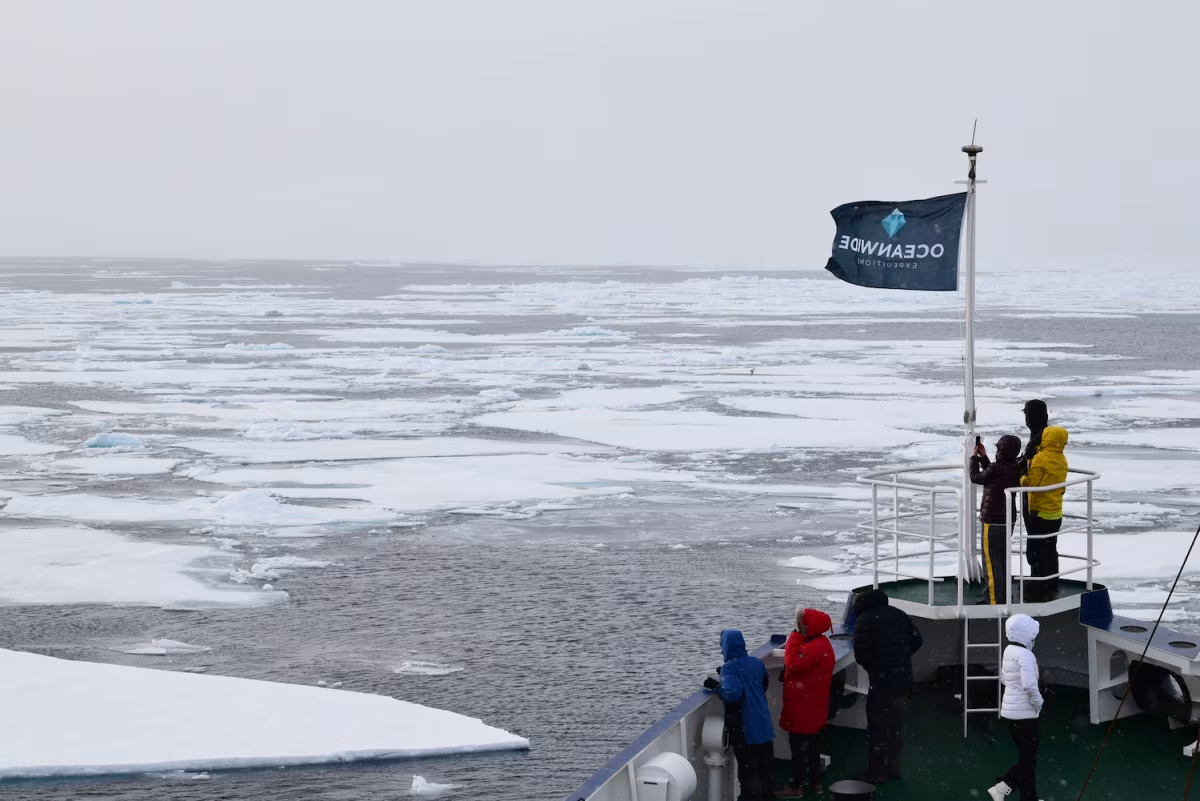
Arctic vs. Antarctica infographic
Below you can find the Arctic or Antarctica dilemma summarized in this lively infographic. May it help make your decision a little easier and a lot more fun!

